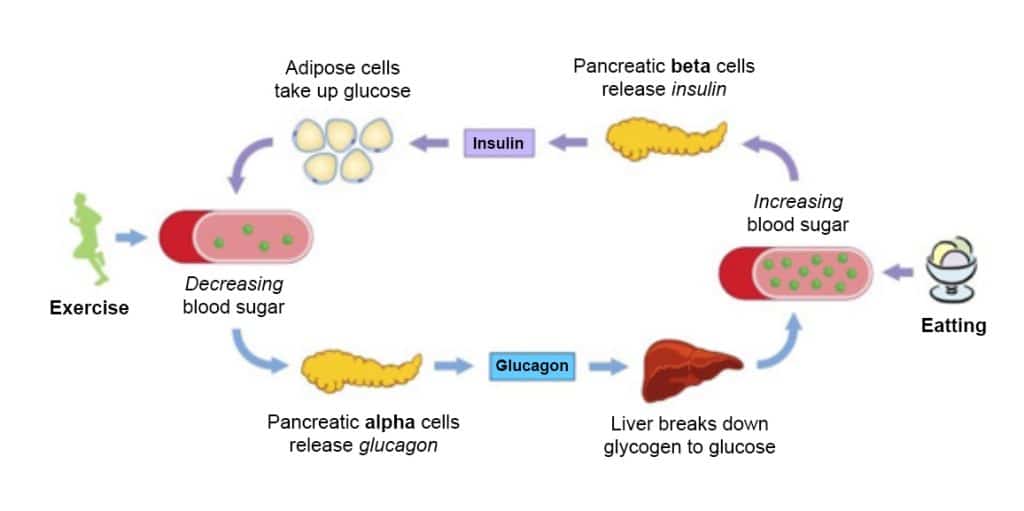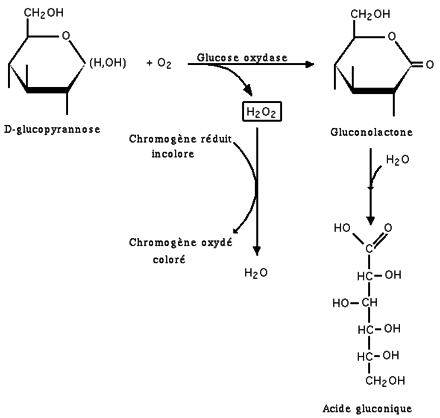Causes for high glucose. Understanding Hyperglycemia in Diabetes: Causes, Symptoms, and Management
What are the main causes of high blood glucose in diabetes. How can you recognize early symptoms of hyperglycemia. What are the potential long-term complications of persistently elevated blood sugar levels. How is hyperglycemia properly managed and treated in diabetic patients.
What is Hyperglycemia and How Does it Affect Diabetics?
Hyperglycemia, or high blood sugar, is a condition that primarily affects individuals with diabetes. It occurs when glucose levels in the bloodstream become elevated above normal ranges. For people with diabetes, this happens due to the body’s inability to properly produce or utilize insulin, the hormone responsible for regulating blood sugar levels.
In a healthy individual, insulin helps glucose enter cells to be used for energy. However, in diabetics, this process is impaired, leading to a buildup of glucose in the blood. Persistent hyperglycemia can have serious short-term and long-term health consequences if left untreated.

What blood glucose levels are considered hyperglycemic?
Generally, blood glucose levels above 180-200 mg/dL (10-11.1 mmol/L) are considered hyperglycemic. However, symptoms may not become noticeable until glucose levels are significantly elevated. Regular blood sugar monitoring is crucial for diabetics to catch hyperglycemia early.
Common Causes of Hyperglycemia in Diabetic Patients
Several factors can contribute to hyperglycemia in people with diabetes:
- Insufficient insulin or oral diabetes medication
- Improper insulin injection technique or using expired insulin
- Not following a proper diabetes eating plan
- Physical inactivity
- Illness or infection
- Use of certain medications, particularly steroids
- Injury or surgery
- Emotional stress
Understanding these triggers can help diabetics better manage their blood sugar levels and prevent hyperglycemic episodes.
How does stress impact blood sugar levels?
Stress, whether physical or emotional, can cause blood sugar levels to rise. This occurs because stress hormones like cortisol can increase glucose production and insulin resistance. Even non-diabetics may experience transient hyperglycemia during severe stress or illness.
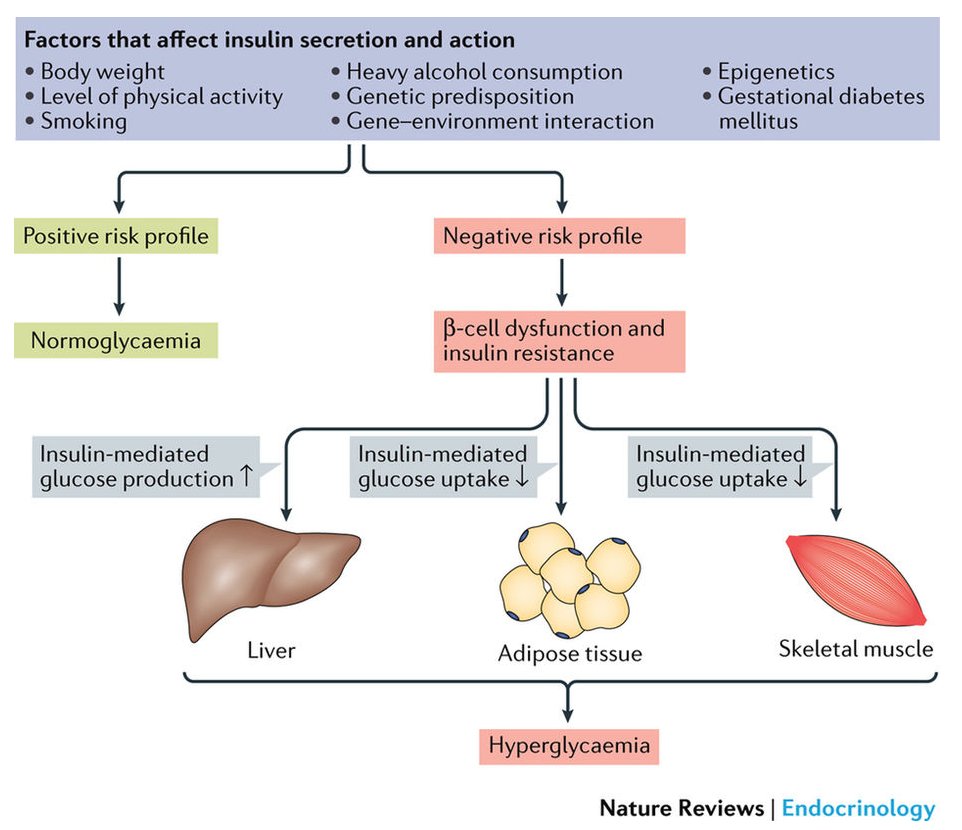
Recognizing the Early Signs and Symptoms of Hyperglycemia
Identifying hyperglycemia early is crucial for prompt treatment. Common early signs include:
- Frequent urination
- Increased thirst
- Blurred vision
- Fatigue
- Headache
These symptoms typically develop slowly over several days or weeks as blood sugar levels remain elevated. It’s important to note that some individuals with long-standing type 2 diabetes may not exhibit symptoms despite high blood glucose levels.
What are the later signs of severe hyperglycemia?
If hyperglycemia persists untreated, more severe symptoms may develop, including:
- Fruity-smelling breath
- Nausea and vomiting
- Shortness of breath
- Dry mouth
- Weakness
- Confusion
- Abdominal pain
In extreme cases, hyperglycemia can lead to diabetic ketoacidosis, a potentially life-threatening condition requiring immediate medical attention.
The Long-Term Health Risks of Chronic Hyperglycemia
Persistent hyperglycemia, even if not severe, can lead to serious long-term complications affecting various body systems:

- Eye damage (diabetic retinopathy)
- Kidney disease (diabetic nephropathy)
- Nerve damage (diabetic neuropathy)
- Cardiovascular disease
- Increased risk of infections
- Slow wound healing
- Cognitive impairment
These complications underscore the importance of maintaining good blood sugar control through proper diabetes management.
How does hyperglycemia affect the cardiovascular system?
Chronic high blood sugar can damage blood vessels and nerves that control the heart. This increases the risk of atherosclerosis, heart disease, and stroke in diabetics. Additionally, hyperglycemia can contribute to high blood pressure and abnormal cholesterol levels, further exacerbating cardiovascular risks.
Effective Strategies for Managing and Preventing Hyperglycemia
Proper management of hyperglycemia involves a multifaceted approach:
- Regular blood glucose monitoring
- Adhering to prescribed medication regimens
- Following a balanced diabetes-friendly diet
- Engaging in regular physical activity
- Stress management techniques
- Proper sick-day management
- Regular medical check-ups
Working closely with healthcare providers to develop an individualized diabetes management plan is crucial for preventing hyperglycemic episodes and maintaining overall health.

How can exercise help manage blood sugar levels?
Regular physical activity can improve insulin sensitivity, allowing cells to use glucose more effectively. This can help lower blood sugar levels and reduce the risk of hyperglycemia. However, it’s important for diabetics to monitor their blood sugar before, during, and after exercise, as intense activity can sometimes cause blood sugar fluctuations.
When to Seek Medical Attention for Hyperglycemia
While proper self-management is crucial, there are situations where medical intervention is necessary. Seek immediate medical attention if:
- Blood glucose levels persistently exceed 240 mg/dL (13.3 mmol/L) and ketones are present in urine
- You’re experiencing severe nausea, vomiting, or inability to keep fluids down
- You have a fever lasting more than 24 hours
- Blood glucose remains high despite taking medication as prescribed
Prompt medical care can prevent the development of more serious complications like diabetic ketoacidosis.
What is diabetic ketoacidosis and why is it dangerous?
Diabetic ketoacidosis (DKA) is a severe complication of diabetes that occurs when the body starts breaking down fat for energy due to insufficient insulin. This process produces toxic acids called ketones. DKA can lead to severe dehydration, electrolyte imbalances, and in extreme cases, coma or death. It requires immediate medical treatment to correct the underlying metabolic imbalances.

The Role of Diet in Managing Hyperglycemia
Proper nutrition plays a crucial role in managing blood sugar levels and preventing hyperglycemia. Key dietary strategies include:
- Monitoring carbohydrate intake
- Choosing complex carbohydrates over simple sugars
- Incorporating plenty of fiber-rich foods
- Balancing meals with lean proteins and healthy fats
- Practicing portion control
- Limiting alcohol consumption
A registered dietitian can help develop a personalized meal plan that meets individual nutritional needs while supporting blood sugar management.
How does the glycemic index affect blood sugar control?
The glycemic index (GI) is a measure of how quickly a food can raise blood sugar levels. Foods with a lower GI are generally better for blood sugar control as they cause a slower, more gradual rise in glucose levels. Incorporating more low-GI foods into the diet can help prevent sudden spikes in blood sugar and reduce the risk of hyperglycemia.
Innovations in Diabetes Management and Hyperglycemia Prevention
Advancements in medical technology have introduced new tools for managing diabetes and preventing hyperglycemia:

- Continuous glucose monitoring (CGM) systems
- Insulin pumps with smart algorithms
- Artificial pancreas systems
- Smartphone apps for tracking blood sugar, diet, and medication
- Non-invasive glucose monitoring devices (in development)
These innovations can provide more precise blood sugar control and early warning of potential hyperglycemic episodes, enabling more proactive management of diabetes.
How do continuous glucose monitoring systems work?
Continuous glucose monitoring systems use a small sensor inserted under the skin to measure glucose levels in interstitial fluid continuously. The data is transmitted to a receiver or smartphone, providing real-time glucose readings and trends. This allows users to see how their blood sugar levels change throughout the day and night, helping them make more informed decisions about diet, exercise, and medication.
Understanding hyperglycemia and its impact on diabetic health is crucial for effective management of the condition. By recognizing early symptoms, identifying triggers, and implementing proper management strategies, individuals with diabetes can significantly reduce their risk of hyperglycemic episodes and associated complications. Regular monitoring, adherence to treatment plans, and lifestyle modifications are key components of successful blood sugar control. As research continues and technology advances, new tools and treatments may offer even better ways to manage hyperglycemia and improve the quality of life for those living with diabetes.
:max_bytes(150000):strip_icc()/is-diabetes-genetic-5112506_final-04c9aa844032499fbcd37bc36df78b38.jpg)
Hyperglycemia in diabetes – Symptoms and causes
Overview
High blood sugar (hyperglycemia) affects people who have diabetes. Several factors can contribute to hyperglycemia in people with diabetes, including food and physical activity choices, illness, nondiabetes medications, or skipping or not taking enough glucose-lowering medication.
It’s important to treat hyperglycemia, because if left untreated, hyperglycemia can become severe and lead to serious complications requiring emergency care, such as a diabetic coma. In the long term, persistent hyperglycemia, even if not severe, can lead to complications affecting your eyes, kidneys, nerves and heart.
Products & Services
Show more products from Mayo Clinic
Symptoms
Hyperglycemia doesn’t cause symptoms until glucose values are significantly elevated — usually above 180 to 200 milligrams per deciliter (mg/dL), or 10 to 11.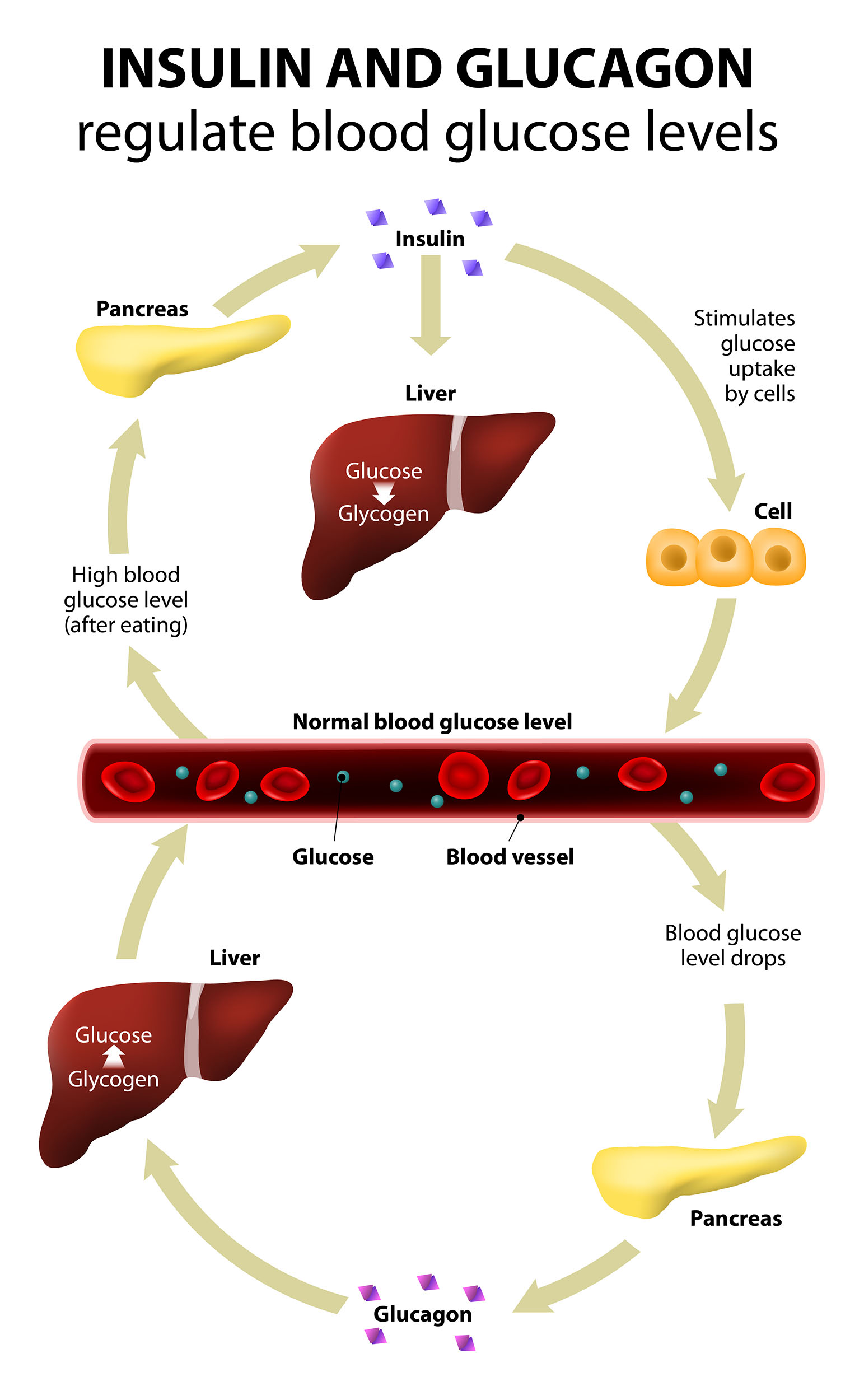 1 millimoles per liter (mmol/L). Symptoms of hyperglycemia develop slowly over several days or weeks. The longer blood sugar levels stay high, the more serious the symptoms become. However, some people who’ve had type 2 diabetes for a long time may not show any symptoms despite elevated blood sugar levels.
1 millimoles per liter (mmol/L). Symptoms of hyperglycemia develop slowly over several days or weeks. The longer blood sugar levels stay high, the more serious the symptoms become. However, some people who’ve had type 2 diabetes for a long time may not show any symptoms despite elevated blood sugar levels.
Early signs and symptoms
Recognizing early signs and symptoms of hyperglycemia can help you treat the condition promptly. Watch for:
- Frequent urination
- Increased thirst
- Blurred vision
- Fatigue
- Headache
Later signs and symptoms
If hyperglycemia goes untreated, it can cause toxic acids (ketones) to build up in your blood and urine (ketoacidosis). Signs and symptoms include:
- Fruity-smelling breath
- Nausea and vomiting
- Shortness of breath
- Dry mouth
- Weakness
- Confusion
- Coma
- Abdominal pain
When to see a doctor
Call 911 or emergency medical assistance if:
- You are sick and can’t keep any food or fluids down
- Your blood glucose levels are persistently above 240 mg/dL (13.
 3 mmol/L) and you have ketones in your urine
3 mmol/L) and you have ketones in your urine
Make an appointment with your doctor if:
- You experience ongoing diarrhea or vomiting, but you’re able to take some foods or drinks
- You have a fever that lasts more than 24 hours
- Your blood glucose is more than 240 mg/dL (13.3 mmol/L) even though you’ve taken your diabetes medication
- You have trouble keeping your blood glucose within the desired range
Causes
During digestion, your body breaks down carbohydrates from foods — such as bread, rice and pasta — into various sugar molecules. One of these sugar molecules is glucose, a main energy source for your body. Glucose is absorbed directly into your bloodstream after you eat, but it can’t enter the cells of most of your tissues without the help of insulin — a hormone secreted by your pancreas.
When the glucose level in your blood rises, it signals your pancreas to release insulin.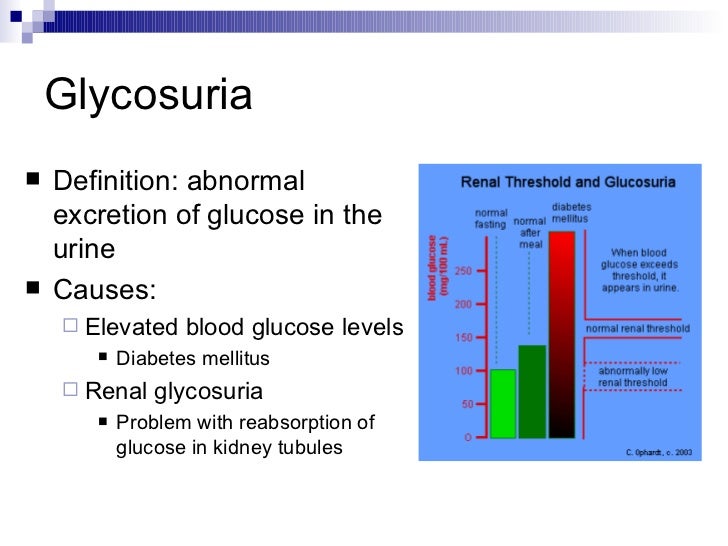 The insulin unlocks your cells so that glucose can enter and provide the fuel your cells need to function properly. Any extra glucose is stored in your liver and muscles in the form of glycogen.
The insulin unlocks your cells so that glucose can enter and provide the fuel your cells need to function properly. Any extra glucose is stored in your liver and muscles in the form of glycogen.
This process lowers the amount of glucose in your bloodstream and prevents it from reaching dangerously high levels. As your blood sugar level returns to normal, so does the secretion of insulin from your pancreas.
Diabetes drastically lowers insulin’s effects on your body. This may be because your pancreas is unable to produce insulin (type 1 diabetes), or it may be because your body is resistant to the effects of insulin or doesn’t produce enough insulin to maintain a normal glucose level (type 2 diabetes). As a result, glucose tends to build up in your bloodstream (hyperglycemia) and may reach dangerously high levels if not treated properly. Insulin or other drugs are used to lower blood sugar levels.
Risk factors
Many factors can contribute to hyperglycemia, including:
- Not using enough insulin or oral diabetes medication
- Not injecting insulin properly or using expired insulin
- Not following your diabetes eating plan
- Being inactive
- Having an illness or infection
- Using certain medications, such as steroids
- Being injured or having surgery
- Experiencing emotional stress, such as family conflict or workplace challenges
Illness or stress can trigger hyperglycemia because hormones produced to combat illness or stress can also cause your blood sugar to rise. Even people who don’t have diabetes may develop transient hyperglycemia during severe illness. But people with diabetes may need to take extra diabetes medication to keep blood glucose near normal during illness or stress.
Even people who don’t have diabetes may develop transient hyperglycemia during severe illness. But people with diabetes may need to take extra diabetes medication to keep blood glucose near normal during illness or stress.
Complications
Long-term complications
Keeping your blood sugar in a healthy range can help prevent many diabetes-related complications. Long-term complications of untreated hyperglycemia can include:
- Cardiovascular disease
- Nerve damage (neuropathy)
- Kidney damage (diabetic nephropathy) or kidney failure
- Damage to the blood vessels of the retina (diabetic retinopathy), potentially leading to blindness
- Clouding of the normally clear lens of your eye (cataract)
- Feet problems caused by damaged nerves or poor blood flow that can lead to serious skin infections, ulcerations, and in some severe cases, amputation
- Bone and joint problems
- Teeth and gum infections
Emergency complications
If blood sugar rises high enough or for a prolonged period of time, it can lead to two serious conditions.
Diabetic ketoacidosis. Diabetic ketoacidosis develops when you don’t have enough insulin in your body. When this happens, sugar (glucose) can’t enter your cells for energy. Your blood sugar level rises, and your body begins to break down fat for energy.
This process produces toxic acids known as ketones. Excess ketones accumulate in the blood and eventually “spill over” into the urine. Left untreated, diabetic ketoacidosis can lead to a diabetic coma and be life-threatening.
Hyperglycemic hyperosmolar state. This condition occurs when people produce insulin, but it doesn’t work properly. Blood glucose levels may become very high — greater than 1,000 mg/dL (55.6 mmol/L). Because insulin is present but not working properly, the body can’t use either glucose or fat for energy.
Glucose is then spilled into the urine, causing increased urination. Left untreated, diabetic hyperglycemic hyperosmolar state can lead to life-threatening dehydration and coma.
 Prompt medical care is essential.
Prompt medical care is essential.
Prevention
The following suggestions can help keep your blood sugar within your target range:
- Follow your diabetes meal plan. If you take insulin or oral diabetes medication, it’s important that you be consistent about the amount and timing of your meals and snacks. The food you eat must be in balance with the insulin working in your body.
- Monitor your blood sugar. Depending on your treatment plan, you may check and record your blood sugar level several times a week or several times a day. Careful monitoring is the only way to make sure that your blood sugar level remains within your target range. Note when your glucose readings are above or below your goal range.
- Take your medication as prescribed by your doctor.
- Adjust your medication if you change your physical activity. The adjustment depends on the blood sugar test results and on the type and length of the activity.

Hyperglycemia (High Blood Glucose) | ADA
Hyperglycemia is the technical term for high blood glucose (blood sugar). High blood sugar happens when the body has too little insulin or when the body can’t use insulin properly.
What causes hyperglycemia?
A number of things can cause hyperglycemia:
- If you have type 1, you may not have given yourself enough insulin.
- If you have type 2, your body may have enough insulin, but it is not as effective as it should be.
- You ate more than planned or exercised less than planned.
- You have stress from an illness, such as a cold or flu.
- You have other stress, such as family conflicts or school or dating problems.
- You may have experienced the dawn phenomenon (a surge of hormones that the body produces daily around 4:00 a.m. to 5:00 a.m.).
What are the symptoms of hyperglycemia?
The signs and symptoms include the following:
- High blood sugar
- High levels of sugar in the urine
- Frequent urination
- Increased thirst
Part of managing your diabetes is checking your blood sugar often. Ask your doctor how often you should check and what your blood sugar levels should be. Checking your blood and then treating high blood sugar early will help you avoid problems associated with hyperglycemia.
Ask your doctor how often you should check and what your blood sugar levels should be. Checking your blood and then treating high blood sugar early will help you avoid problems associated with hyperglycemia.
How do I treat hyperglycemia?
You can often lower your blood sugar level by exercising. However, if your blood sugar is above 240 mg/dl, check your urine for ketones. If you have ketones, do not exercise.
Exercising when ketones are present may make your blood sugar level go even higher. You’ll need to work with your doctor to find the safest way for you to lower your blood sugar level.
Cutting down on the amount of food you eat might also help. Work with your dietitian to make changes in your meal plan. If exercise and changes in your diet don’t work, your doctor may change the amount of your medication or insulin or possibly the timing of when you take it.
What if it goes untreated?
Hyperglycemia can be a serious problem if you don’t treat it, so it’s important to treat as soon as you detect it.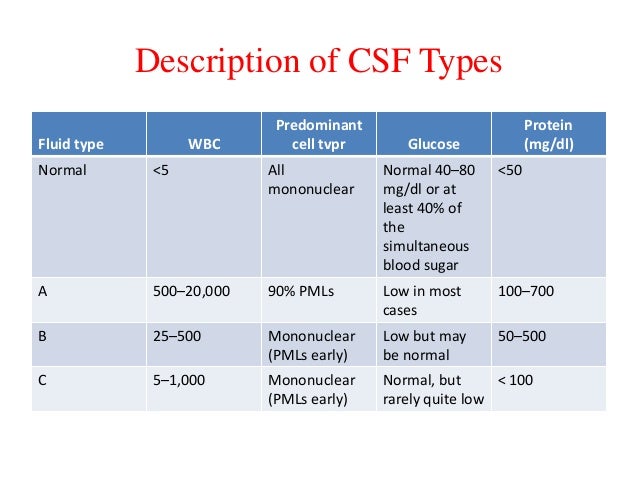 If you fail to treat hyperglycemia, a condition called ketoacidosis (diabetic coma) could occur. Ketoacidosis develops when your body doesn’t have enough insulin. Without insulin, your body can’t use glucose for fuel, so your body breaks down fats to use for energy.
If you fail to treat hyperglycemia, a condition called ketoacidosis (diabetic coma) could occur. Ketoacidosis develops when your body doesn’t have enough insulin. Without insulin, your body can’t use glucose for fuel, so your body breaks down fats to use for energy.
When your body breaks down fats, waste products called ketones are produced. Your body cannot tolerate large amounts of ketones and will try to get rid of them through the urine. Unfortunately, the body cannot release all the ketones and they build up in your blood, which can lead to ketoacidosis.
Ketoacidosis is life-threatening and needs immediate treatment. Symptoms include:
- Shortness of breath
- Breath that smells fruity
- Nausea and vomiting
- Very dry mouth
Talk to your doctor about how to handle this condition.
Medical IDs
Many people with diabetes, particularly those who use insulin, should have a medical ID with them at all times.
In the event of a severe hypoglycemic episode, a car accident, or other emergency, the medical ID can provide critical information about the person’s health status, such as the fact that they have diabetes, whether or not they use insulin, whether they have any allergies, etc. Emergency medical personnel are trained to look for a medical ID when they are caring for someone who can’t speak for themselves.
Emergency medical personnel are trained to look for a medical ID when they are caring for someone who can’t speak for themselves.
Medical IDs are usually worn as a bracelet or a necklace. Traditional IDs are etched with basic, key health information about the person, and some IDs now include compact USB drives that can carry a person’s full medical record for use in an emergency.
How can I prevent hyperglycemia?
Your best bet is to practice good diabetes management and learn to detect hyperglycemia so you can treat it early — before it gets worse.
If you’re new to type 2 diabetes, join our free Living With Type 2 Diabetes program to get help and support during your first year.
Hyperglycemia: What Is High Blood Sugar?
Hyperglycemia means high glucose (hyper- + glyc-) in the blood (-emia). Your body needs glucose to properly function. Your cells rely on glucose for energy. Hyperglycemia is a defining characteristic of diabetes—when the blood glucose level is too high because the body isn’t properly using or doesn’t make the hormone insulin.
Eating too many processed foods may cause your blood sugar to rise.
What is Glucose?
Frequently Asked Questions
What is glucose sugar? Is glucose sugar?
Glucose is a simple sugar your body makes from the foods you eat. Blood sugar is also known as glucose.
Is glucose good for you?
Glucose is an essential part of how your body processes the food you eat into energy. It’s important to keep your blood glucose levels within a healthy range to avoid hyperglycemia (high blood sugar) and hypoglycemia (low blood sugar), which can both lead to dangerous complications.
What does glucose do in the body?
The function of glucose is to provide fuel for the body. Your cells use glucose to make energy, which is the main function of sugar in the body.
How does glucose function?
You get glucose from the foods you eat. Carbohydrates, such as fruit, milk, potatoes, bread, and rice, are the biggest source of glucose in a typical diet.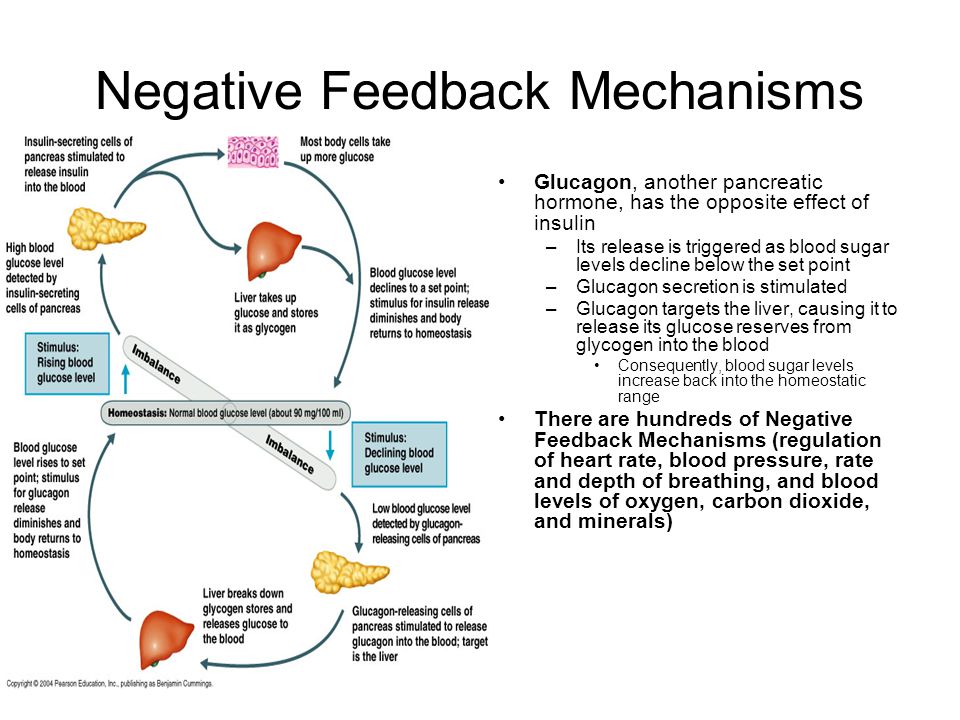 Your body breaks down carbohydrates into glucose sugar, and then transports the body sugars to the cells via the bloodstream.
Your body breaks down carbohydrates into glucose sugar, and then transports the body sugars to the cells via the bloodstream.
Body Needs Insulin
However, in order to use the glucose, your body needs insulin. This is a hormone produced by the pancreas. Insulin helps transport glucose into the cells, particularly the muscle cells.
People with type 1 diabetes no longer make insulin to help their bodies use glucose, so they have to take insulin, which is injected under the skin. People with type 2 diabetes may have enough insulin, but their body doesn’t use it well; they’re insulin resistant. Some people with type 2 diabetes may not produce enough insulin.
People with diabetes may become hyperglycemic if they don’t keep their blood glucose level under control (by using insulin, medications, and appropriate meal planning). For example, if someone with type 1 diabetes doesn’t take enough insulin before eating, the glucose their body makes from that food can build up in their blood and lead to high blood sugar.
Your endocrinologist will tell you what your target blood glucose levels are. Your levels may be different from what is usually considered as normal because of age, pregnancy, and/or other factors.
- Fasting hyperglycemia is defined as when you don’t eat for at least eight hours. Recommended range without diabetes is 70 to 130mg/dL. (The standard for measuring blood glucose is “mg/dL” which means milligrams per deciliter.) If your blood glucose level is above 130mg/dL, that’s fasting hyperglycemia. Fasting hyperglycemia is a common diabetes complication.
- Postprandial or reactive hyperglycemia occurs after eating (postprandial means “after eating”). During this type of hyperglycemia, your liver doesn’t stop sugar production, as it normally would directly after a meal, and stores glucose as glycogen (energy sugar stores). If your postprandial (1-2 hours after eating) blood glucose level is above 180mg/dL, that’s postprandial or reactive hyperglycemia.

However, it’s not just people with diabetes who can develop hyperglycemia. Certain medications and illnesses can cause it, including beta blockers, steroids, and bulimia. This article will focus on hyperglycemia caused by diabetes.
Early Hyperglycemia Symptoms
Early signs of high blood sugar, or hyperglycemia, may serve as a warning even before you test your glucose level. Typical high sugar symptoms may include:
- Increased thirst and/or hunger
- Frequent urination
- Sugar in your urine
- Headache
- Blurred vision
- Fatigue
Ketoacidosis: When Hyperglycemia Becomes Severe for People with Type 1 Diabetes
If you have type 1 diabetes, it is important to recognize and treat hyperglycemia because if left untreated it can lead to ketoacidosis. This happens because without glucose, the body’s cells must use ketones (toxic acids) as a source of energy. Ketoacidosis develops when ketones build up in the blood. It can become serious and lead to diabetic coma or even death. According to the American Diabetes Association, ketoacidosis affects people with type 1 diabetes, but it rarely affects people with type 2 diabetes.
Ketoacidosis develops when ketones build up in the blood. It can become serious and lead to diabetic coma or even death. According to the American Diabetes Association, ketoacidosis affects people with type 1 diabetes, but it rarely affects people with type 2 diabetes.
Many symptoms of ketoacidosis are similar to hyperglycemia. The hallmarks of ketoacidosis are:
- High level of ketones in the urine
- Shortness of breath
- Fruit-smelling breath
- Dry mouth
Additionally, stomach pain, nausea, vomiting, and confusion may accompany ketoacidosis. Immediate medical attention is highly recommended if you have any of these symptoms.
Some people with diabetes are instructed by their doctor to regularly test ketone levels. Ketone testing is performed two ways: using urine or using blood. For a urine test, you dip a special type of test strip into your urine. For testing blood ketones, a special meter and test strips are used. The test is performed exactly like a blood glucose test.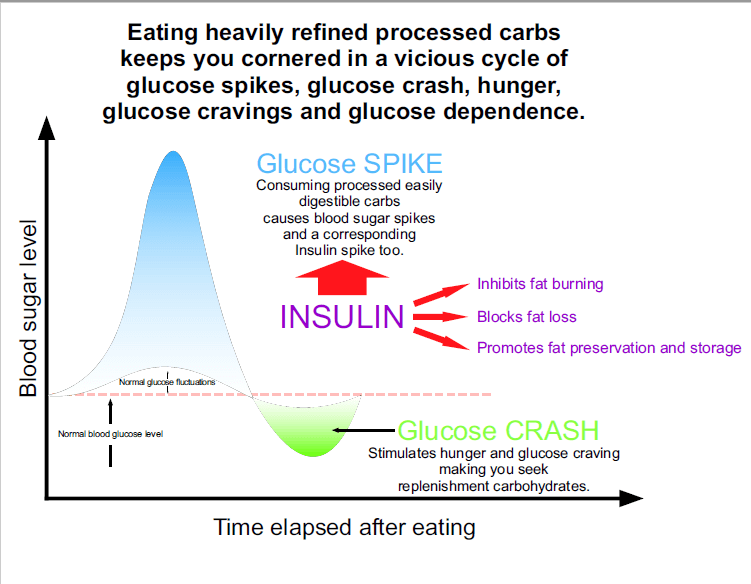 If ketone testing is part of your self-monitoring of diabetes, your healthcare professional will provide you with other information including prevention.
If ketone testing is part of your self-monitoring of diabetes, your healthcare professional will provide you with other information including prevention.
Hyperosmolar Hyperglycemic Nonketotic Syndrome (HHNS): When Hyperglycemia Becomes Severe for People with Type 2 Diabetes
Hyperosmolar hyperglycemic nonketotic syndrome (HHNS) is very rare, but you should be aware of it and know how to handle it if it occurs. HHNS is when your blood glucose level goes way too high—you become extremely hyperglycemic. HHNS affects people with type 2 diabetes.
HHNS is most likely to occur when you’re sick, and elderly people are most likely to develop it. It starts when your blood glucose level starts to climb: when that happens, your body will try to get rid of all the excess glucose through frequent urination. That dehydrates your body, and you’ll become very thirsty.
Unfortunately, when you’re sick, it’s sometimes more difficult to rehydrate your body, as you know you should.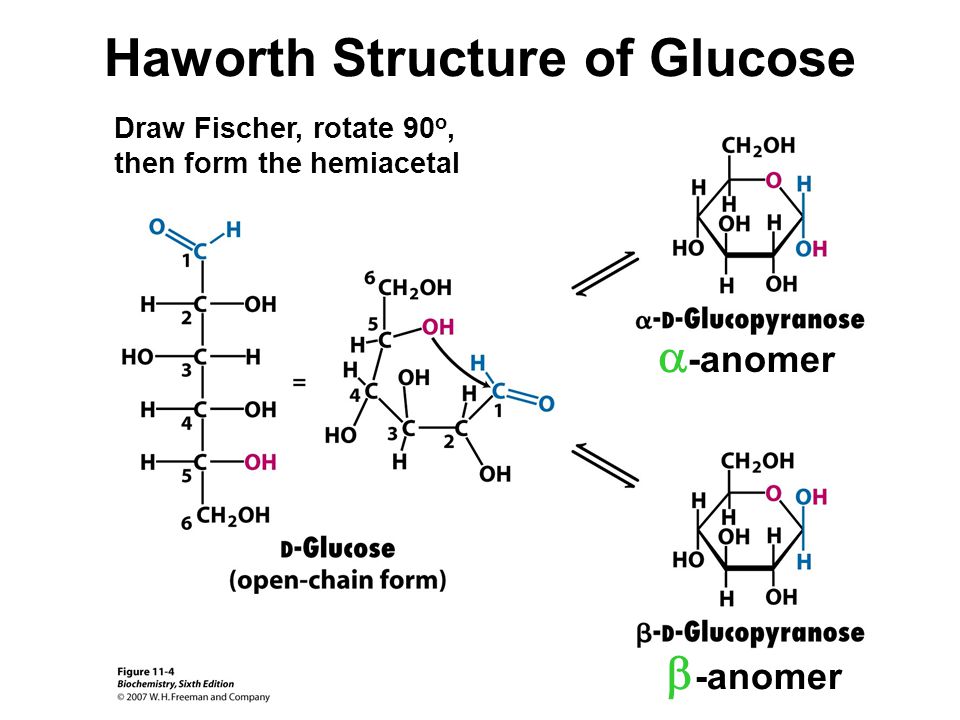 For example, it might be difficult to keep fluids down. When you don’t rehydrate your body, the blood glucose level continues to climb, and it can eventually go so high that it could send you into a coma.
For example, it might be difficult to keep fluids down. When you don’t rehydrate your body, the blood glucose level continues to climb, and it can eventually go so high that it could send you into a coma.
To avoid hyperosmolar hyperglycemic nonketotic syndrome, you should keep close watch on your blood glucose level when you’re sick (you should always pay attention to your blood glucose level, but pay special attention when you’re sick).
Talk to your healthcare professional about having a sick-day plan to follow that will help you avoid HHNS.
You should also be able to quickly recognize the signs and symptoms of HHNS, which include:
- Extremely high blood glucose level (over 600 mg/dL)
- Dry mouth
- High fever (over 101ºF)
- Sleepiness
- Vision loss
Treating Hyperglycemia
Treating hyperglycemia is a matter of working on preventing it.
If your blood glucose level is consistently too high, talk with your doctor about what you can do to keep it in a more normal range. He or she may suggest:
He or she may suggest:
- Medication Adjustment: Your doctor may adjust your insulin (or glucose-lowering medication) dose or when you take it to help prevent hyperglycemia.
- Meal Plan Help: A healthy diet and proper meal planning can help you avoid hyperglycemia. This includes eating often, watching intake of sugar and carbohydrates, limiting use of alcohol, and eating a diet rich in vegetables, fruit and whole grains. If you are having difficulty planning meals, talk to your doctor or dietitian.
- Exercise: Regular exercise is important (even if you don’t have diabetes). Maintaining a healthy level of activity can help you keep your blood glucose level in a normal range.
However, if you develop hyperglycemia and/or ketones are present in your urine, don’t exercise. Hyperglycemia and/or ketones in the urine mean exercise will cause your blood glucose to rise higher.
Preventing Hyperglycemia
The easiest way to prevent hyperglycemia is to control your diabetes. That includes knowing the early symptoms—no matter how subtle. Remember, there are many aspects of your diabetes care you can control:
That includes knowing the early symptoms—no matter how subtle. Remember, there are many aspects of your diabetes care you can control:
- Taking your insulin (or glucose-lowering medication) as prescribed
- Avoiding consuming too many calories (i.e., sugary beverages)
- Consuming the right types and grams of carbohydrates
- Controlling stress
- Staying active (exercising)
- Going to your regularly scheduled doctor’s appointments
Hyperglycemia is a common complication of diabetes, but through medication, exercise, and careful meal planning, you can keep your blood glucose level from going too high—and that can help you in the long-run.
Keeping your blood glucose levels in the recommended ranges throughout the day will help you avoid long-term complications of diabetes, such as:
- Eye damage
- Heart attack—or other cardiovascular complications
- Kidney damage
- Nerve damage
- Stroke
- Problems with healing wounds
By maintaining your blood glucose levels—and avoiding hyperglycemia—you can reduce your risk of all these complications.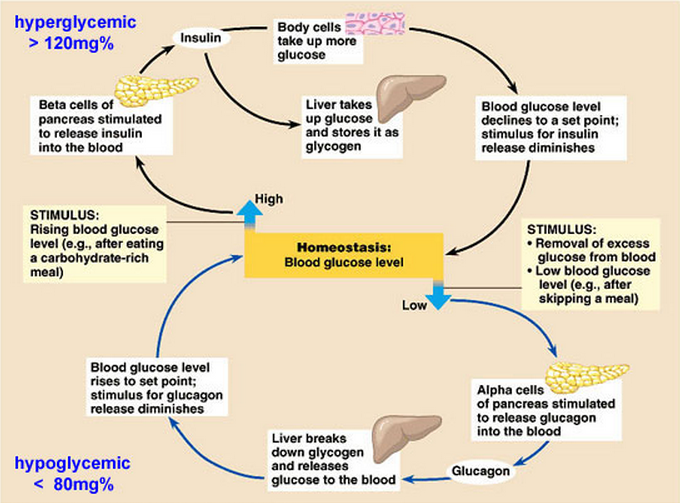
Updated on: 06/30/21
Causes of High Blood Glucose and Low Blood Glucose
Low or high blood sugar in a child with diabetes can cause loss of responsiveness. All of the cells in our body depend upon sugar in our blood as the main source of energy. This sugar comes from the foods that we eat. Certain organs in our body also make and store sugar.
When the body is working properly, it automatically regulates the amount of sugar in the blood. When there is too much sugar in the blood, the body makes insulin, which lowers blood sugar. When blood sugar levels are too low, the body cuts back on the amount of insulin that it is making and lets the blood sugar levels rise.
When blood sugar levels in the body are lower than normal, a child has hypoglycemia. Signs of hypoglycemia in a healthy child are usually mild, such as irritability. In a child with diabetes, hypoglycemia can lead to loss of responsiveness if not treated quickly. A diabetic child can get hypoglycemia if he doesn’t eat enough or doesn’t eat at the right time. He can get hypoglycemia if he takes too much insulin. Blood sugar levels may drop because of exercise, being overheated, or illness.
He can get hypoglycemia if he takes too much insulin. Blood sugar levels may drop because of exercise, being overheated, or illness.
A diabetic child may have too much sugar in the body. This is called hyperglycemia. It is the opposite of hypoglycemia. This condition may be caused by too little insulin, illness, or stress. It may be caused by overeating, inactivity, or a combination of all of these factors.
If you are not sure if the child has hypoglycemia or hyperglycemia, give sugar. See if the symptoms improve. Always call EMS if symptoms are severe or if the child becomes unresponsive.
Signs of Hypoglycemia and Hyperglycemia
The information contained on this Web site should not be used as a substitute for the medical care and advice of your pediatrician. There may be variations in treatment that your pediatrician may recommend based on individual facts and circumstances.
10 Surprising Causes of Blood Sugar Fluctuations
Whether you were recently diagnosed with type 2 diabetes or have been living with the condition for several years, you know how fickle blood sugar levels can be, and how important it is that they stay controlled.
Proper blood sugar control is key for warding off potential diabetes complications, such as kidney disease, nerve damage, vision problems, stroke, and heart disease, according to the National Institutes of Health (NIH). Plus, keeping your levels in check on a daily basis can help you stay energized, focused, and in a good mood, explains Lisa McDermott, RD, CDCES, a diabetes specialist with the Pittsburgh-based Allegheny Health Network.
According to the American Diabetes Association (ADA), proper medication, effective meal planning, regular exercise, and regular blood sugar checks can all help you keep your levels within a healthy range. The ADA recommends blood glucose stay within 80 to 130 milligrams per deciliter (mg/dL) before meals and below 180 mg/dL two hours after the start of a meal. Furthermore, the organization recommends getting an A1C test, which measures your average blood glucose over the past two to three months, at least twice per year if your levels are stable and you are meeting treatment goals.
RELATED: 5 Ways to Lower Your A1C
Learning how different habits can cause your blood sugar to fluctuate can help you better predict how your levels will swing. Both low and high blood-sugar levels lead to serious health consequences. High blood sugar may cause nausea, vomiting, or shortness of breath, while low blood sugar may cause confusion, dizziness, blurred vision, seizures, unconsciousness, or even death, McDermott explains.
Managing the factors that can influence blood sugar can be a balancing act. Even if you keep careful tabs on what you eat and take your medication conscientiously, you will inevitably see fluctuations in your day-to-day levels. After all, some of the factors that affect your readings are out of your control.
But that doesn’t mean you can’t defend against those factors. Read on to learn some of the lesser-known factors that can cause blood sugar swings — and how to adjust accordingly.
Hyperglycaemia (high blood sugar) – Illnesses & conditions
Hyperglycaemia is the medical term for a high blood sugar (glucose) level. It’s a common problem for people with diabetes.
It’s a common problem for people with diabetes.
It can affect people with type 1 diabetes and type 2 diabetes, as well as pregnant women with gestational diabetes.
It can occasionally affect people who don’t have diabetes, but usually only people who are seriously ill, such as those who have recently had a stroke or heart attack, or have a severe infection.
Hyperglycaemia shouldn’t be confused with hypoglycaemia, which is when a person’s blood sugar level drops too low.
This information focuses on hyperglycaemia in people with diabetes.
Is hyperglycaemia serious?
The aim of diabetes treatment is to keep blood sugar levels as near to normal as possible. But if you have diabetes, no matter how careful you are, you’re likely to experience hyperglycaemia at some point.
It’s important to be able to recognise and treat hyperglycaemia, as it can lead to serious health problems if left untreated.
Occasional mild episodes aren’t usually a cause for concern and can be treated quite easily or may return to normal on their own. However, hyperglycaemia can be potentially dangerous if blood sugar levels become very high or stay high for long periods.
However, hyperglycaemia can be potentially dangerous if blood sugar levels become very high or stay high for long periods.
Very high blood sugar levels can cause life-threatening complications, such as:
- diabetic ketoacidosis (DKA) – a condition caused by the body needing to break down fat as a source of energy, which can lead to a diabetic coma; this tends to affect people with type 1 diabetes
- hyperosmolar hyperglycaemic state (HHS) – severe dehydration caused by the body trying to get rid of excess sugar; this tends to affect people with type 2 diabetes
Regularly having high blood sugar levels for long periods of time (over months or years) can result in permanent damage to parts of the body such as the eyes, nerves, kidneys and blood vessels.
If you experience hyperglycaemia regularly, speak to your doctor or diabetes care team. You may need to change your treatment or lifestyle to keep your blood sugar levels within a healthy range.
Symptoms of hyperglycaemia
Symptoms of hyperglycaemia in people with diabetes tend to develop slowly over a few days or weeks. In some cases, there may be no symptoms until the blood sugar level is very high.
In some cases, there may be no symptoms until the blood sugar level is very high.
Symptoms of hyperglycaemia include:
Symptoms of hyperglycaemia can also be due to undiagnosed diabetes, so see your GP if this applies to you. You can have a test to check for the condition.
What should my blood sugar level be?
When you’re first diagnosed with diabetes, your diabetes care team will usually tell you what your blood sugar level is and what you should aim to get it down to.
You may be advised to use a testing device to monitor your blood sugar level regularly at home, or you may have an appointment with a nurse or doctor every few months to see what your level is.
Target blood sugar levels differ for everyone, but generally speaking:
- if you monitor yourself at home – a normal target is 4-7mmol/l before eating and under 8.5-9mmol/l two hours after a meal
- if you’re tested every few months – a normal target is below 48mmol/mol (or 6.
 5% on the older measurement scale)
5% on the older measurement scale)
What causes high blood sugar?
A variety of things can trigger an increase in blood sugar level in people with diabetes, including:
- stress
- an illness, such as a cold
- eating too much, such as snacking between meals
- a lack of exercise
- dehydration
- missing a dose of your diabetes medication, or taking an incorrect dose
- over-treating an episode of hypoglycaemia (low blood sugar)
- taking certain medicines, such as steroid medication
Occasional episodes of hyperglycaemia can also occur in children and young adults during growth spurts.
Treating hyperglycaemia
If you’ve been diagnosed with diabetes and you have symptoms of hyperglycaemia, follow the advice your care team has given you to reduce your blood sugar level.
If you’re not sure what to do, contact your GP or care team.
You may be advised to:
- change your diet – for example, you may be advised to avoid foods that cause your blood sugar levels to rise, such as cakes or sugary drinks
- drink plenty of sugar-free fluids – this can help if you’re dehydrated
- exercise more often – gentle, regular exercise such as walking can often lower your blood sugar level, particularly if it helps you lose weight
- if you use insulin, adjust your dose – your care team can give you specific advice about how to do this
You may also be advised to monitor your blood sugar level more closely, or test your blood or urine for substances called ketones (associated with diabetic ketoacidosis).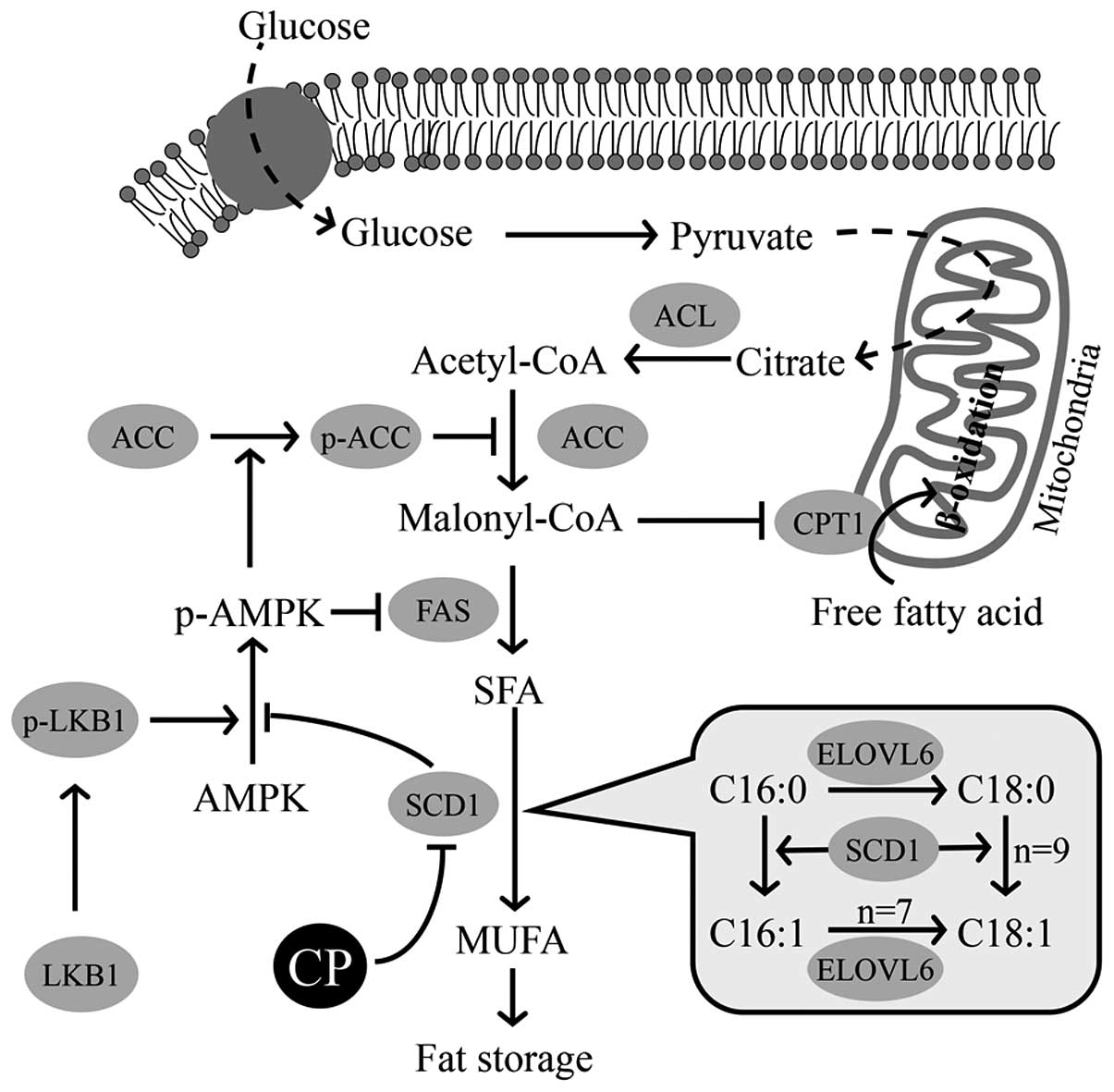
Until your blood sugar level is back under control, watch out for additional symptoms that could be a sign of a more serious condition (see below).
When to get urgent medical attention
Contact your diabetes care team immediately if you have a high blood sugar level and experience the following symptoms:
These symptoms could be a sign of diabetic ketoacidosis or a hyperosmolar hyperglycaemic state (see above) and you may need to be looked after in hospital.
How to prevent hyperglycaemia
There are simple ways to reduce your risk of severe or prolonged hyperglycaemia:
- Be careful what you eat – be particularly aware of how snacking and eating sugary foods or carbohydrates can affect your blood sugar level.
- Stick to your treatment plan – remember to take your insulin or other diabetes medications as recommended by your care team.
- Be as active as possible – getting regular exercise can help stop your blood sugar level rising, but you should check with your doctor first if you’re taking diabetes medication, as some medicines can lead to hypoglycaemia if you exercise too much
- Take extra care when you’re ill – your care team can provide you with some “sick day rules” that outline what you can do to keep your blood sugar level under control during an illness.

- Monitor your blood sugar level – your care team may suggest using a device to check your level at home, so you can spot an increase early and take steps to stop it.
Hyperglycemia (High Blood Sugar) – Managing Side Effects
Chemocare.com
Care During Chemotherapy and Beyond
What Is Hyperglycemia?
Hyperglycemia may be described as an excess of sugar (glucose) in the blood. Your
endocrine system regulates the amount of sugar that is stored and used for energy.
It is important in brain cell function, and energy levels.
Since the sugar that you consume in your diet is either used or stored, certain
conditions and disorders may cause you to have difficulty processing and storing
blood glucose, resulting in hyperglycemia or hypoglycemia.
One hormone that is important to the normal storing and processing of sugar is insulin.
Insulin is a hormone that is made in the pancreas that is responsible for maintaining
“normal” blood sugar levels. If you have a problem with your pancreas, then you
may have increased blood sugar levels.
Normal blood Glucose (sugar) levels are 60-110 mg/dL. Normal values may vary
from laboratory to laboratory. Levels higher than these might indicate hyperglycemia.
Causes of Hyperglycemia:
- Diabetes. About 90% of people with diabetes, have diabetes of adult onset (Diabetes
type 2). You are more at risk for developing diabetes if you are older, extremely
overweight (obese), if you have a family history of diabetes (parents, siblings),
and if you are of African-American, Hispanic American, or Native-American heritage.
People who have diabetes have an underproduction of the hormone, insulin, which
lowers your blood sugar levels. If you have diabetes, you will have problems with
If you have diabetes, you will have problems with
elevated blood sugar levels. - If you develop diabetes type 2, and you are an adult, your healthcare provider may
prescribe medications in a pill form, which allow your body to process insulin that
is needed for maintaining “normal” blood glucose levels. It is likely that your
pancreas is producing enough insulin, but your body is resistant to the insulin,
and is unable to process this hormone effectively, thus resulting in hyperglycemia. - If you have diabetes and are hypoglycemic, your healthcare provider
will also discuss with you a diet that may increase your blood sugar levels. You
will need to follow a special diet, to maintain good blood sugar control. - Exercise is highly recommended, as it will help to lower blood sugar levels, and
promote circulation of the blood throughout your body.
- If you are not able to control your blood sugar levels with diet, exercise, and
medications (in the pill form), your healthcare provider may prescribe insulin injections.
You will be required to take your blood sugar levels at home, while your insulin
requirements are being determined. Your healthcare provider will discuss this with
you, and teach you how to best take care of yourself during this time. - Insulin cannot be taken by mouth because your stomach acid makes the insulin inactive
(it will not work). - You may be taking corticosteroids, such as dexamethasone (Decadron®), or prednisone. These drugs will promote gluconeogenesis,
or increased blood sugar levels in your blood. Many people who are on steroids for
their disease, and develop high blood sugar levels (hyperglycemia),
will return to normal after the medication has been finished.
- You may be receiving Total Parenteral Nutrition (TPN), through your vein (IV). The
TPN solution contains a very high concentration of glucose. Your body will often
times be able to regulate your blood glucose levels, but in some cases, while you
are on TPN, your blood sugar levels may be elevated. - You may have increased blood sugar levels if you have kidney or liver disease. You
may also have an infection in your pancreas that controls blood insulin levels,
thus resulting in hyperglycemia. - If you have an infection, your blood sugar may be briefly high, during the time
that you are ill, resulting in a temporary hyperglycemia. - If you are pregnant, you may develop gestational diabetes. This means that you have
diabetes while you are pregnant. This usually goes away after you deliver your baby.
- Kidney failure, kidney disorders, and damage to your eyes, cardiovascular system,
and other internal organs may result from long-term hyperglycemia. In addition,
there are many other long-term complications of long-standing hyperglycemia, such
as heart and blood circulation problems. This is why it is important to maintain
good control over your disease.
How will I know if my hyperglycemia is related to diabetes?
- Your doctor or healthcare provider may order certain blood tests to determine if
you are diabetic. As discussed, certain conditions may cause temporary increases
in blood sugar levels, resulting in hyperglycemia. You may not
be a “true” diabetic, and the blood sugars may return to normal after your illness,
or treatment of your condition, is resolved. However, you may be treated as if you
However, you may be treated as if you
had diabetes, with frequent blood sugar monitoring, diet and exercise modifications,
until your laboratory values return to normal. Normal blood sugar levels are between
60-110 mg/dL (normal values may vary from laboratory to laboratory). - If you have a fasting blood sugar level of between 110 and 125 mg/dl, you are diagnosed
as having impaired glucose tolerance. This is a strong risk factor for developing
diabetes. With good diet and exercise, you may slow the progression to diabetes
type 2. - If you have a blood sugar of greater than 126 mg/dl, while fasting, you may be diagnosed
with diabetes. - If you have any two blood sugar readings over 200mg/dl, you also may be diagnosed
with diabetes. - You may have an oral glucose tolerance test (OGTT) to diagnose your condition.
 You
You
will be required to drink a solution with a high concentration of glucose, and have
your blood sugar checked 2 hours after it was ingested. This was the traditional
method for diagnosing diabetes, but is done less often today. - A blood test, called Hemoglobin A1C (also called glycosolated hemoglobin), will
measure your average blood sugar levels for 90 days. Your healthcare provider may
order this on diagnosis, and every 3 months thereafter, if you have diabetes.
Signs and Symptoms of Hyperglycemia:
- Symptoms of hyperglycemia are the same as symptoms of diabetes type 2.
- Symptoms include being overly or excessively thirsty.
You may be urinating more often than usual. - You may be tired, and losing weight without trying.
- You may develop yeast or fungal infections.
- Late symptoms of prolonged, elevated blood sugar levels are blurred vision and possibly
numbness in your fingers and toes.
- Severely high levels of blood sugar may cause confusion or a coma.
Things You Can Do About Hyperglycemia:
- If you are experiencing high blood sugars from diabetes, an infection, or a pregnancy,
your healthcare provider may instruct you on the use of pills, insulin, diet, exercise
and blood sugar monitoring during this time. Follow all of your healthcare provider’s
instructions. - Try to exercise. Make a daily walk alone, or with a friend or family member a part
of your routine. Even light walking or aerobic activity may help you to promote
the flow of oxygen in your lungs and blood (oxygenation), lower your blood sugar
levels, and help to prevent long-term complications of hyperglycemia. Also, consistent
diet and exercise will help your healthcare provider determine your insulin or diabetic
pill dosages, and help you to obtain better control of your disease.
- Follow the recommended diet. A diabetic diet may be suggested even if you only have
a short-term elevation in blood sugar due to an infection, or the use of steroids.
The right diet can diminish symptoms. - You will most likely meet with a dietician if you are diagnosed with diabetes, either
Type 2 or gestational, to help you determine a diet that is right for you. This
will help you to gain control over your disease or condition that may be causing
the high blood sugar levels. Reading the labels on food is helpful to know
what kinds of calories, fat and protein you are taking in to control your
diet. Some general recommendations include: - Limit Carbohydrates – Carbohydrates, either simple (such as fruit and sugar) or
complex, (such as pasta and cereals), have the greatest impact on blood sugar levels.
Your diet should include around 50% carbohydrates. Avoid sugar, and instead, use
artificial sweeteners, such as nutrasweet, aspartame, or saccharin. - Protein – your diet should consist of 15-20% protein. Long-term damage to your kidneys
may be corrected by restricting protein – if you are diabetic. - Increase fresh vegetables and fiber intake – Up to 55 grams of fiber in your diet
per day is recommended. Fiber and fresh vegetables help to decrease blood sugar
levels, maintain regular bowel habits, and may prevent certain cancers. - There are many types of “good and bad” fats. The easiest thing to remember is to
limit your intake of saturated fats and oils in your diet. - You will most likely be instructed on obtaining a blood sugar monitor especially
if you have diabetes, and be asked by your healthcare provider to check your blood
sugar levels at home. At first, you will be required to check your blood sugar levels
At first, you will be required to check your blood sugar levels
up to 4 or more times a day, to make sure that the levels are in the normal range,
without extremely high or low levels. Eventually, with diet, exercise, and the proper
medication regimen, you may be able to check your blood sugar levels less often. - Although your blood sugar levels may run high, a sensible bedtime snack may help
to prevent low blood sugar levels during the nighttime. - Alert your friends, family and close contacts about your condition. Tell them what
to look for, including sweatiness, shakiness and confusion, which are serious symptoms
of low blood sugar levels. Keep candy in your pocket in case your blood sugar gets
too low, and instruct them to seek emergency assistance if they are unsure what
to do. - Wear a “medic alert” bracelet, if you have diabetes, or a history of high or low
blood sugars (hyperglycemia or hypoglycemia).
- Make sure you tell your doctor, as well as all healthcare providers,
about any other medications you are taking (including over-the-counter, vitamins,
or herbal remedies). These can cause severe interactions with oral medications,
and affect blood sugar levels. - Remind your doctor or healthcare provider if you have a history of liver, kidney,
or heart disease. - Keep yourself well hydrated. Drink two to three quarts of fluid every 24 hours,
unless you are instructed otherwise. - Avoid alcohol. Certain forms of alcohol may cause you to have a severely high or
low blood sugar level. High blood sugar levels may result if alcohol is mixed with
“syrupy” drinks. Low blood sugars may result if you drink certain forms of “straight”
liquor. If you are taking pills to control your hyperglycemia, alcohol use may cause
life-threatening interaction.
- If you have diabetes, it is important to inspect your feet daily. People with long-term
high blood sugar levels may develop diabetic neuropathy, which has symptoms of decreased
sensation and blood flow to your feet and toes. If you have neuropathy, you may
be unable to notice if there has been any damage to your feet or toes. If you develop
an infection, or a wound, you may not be able to heal as well. - Keep your feet clean and dry. Wear white cotton socks.
- Inspect your feet and toes for cracks, hardened areas, or rashes.
- Apply moisturizer daily, but not between the toes.
- If you notice any wounds, or changes, follow up with a podiatrist or your healthcare
provider. - If you have diabetes, you should see an ophthalmologist to have your eyes checked
yearly. Any change in vision should be reported as soon as it is noticed
Any change in vision should be reported as soon as it is noticed - A most serious side effect and symptom of diabetes and
long-term high blood sugar levels is kidney damage. Your urine may be checked periodically
for protein (called, proteinuria). If there is damage to the kidneys, you will have
protein in your urine. If your kidney damage is noticed early, and there is only
a low level of protein in your urine, your healthcare provider may help you to prevent
further damage by discussing diet, exercise and medications. Strict blood sugar
control will help to prevent proteinuria. - A blood test, called Hemoglobin A1C, will measure your average blood sugar levels
for 90 days. Your healthcare provider may order this, every 3 months if you have
diabetes. - If you experience symptoms or side effects, especially if severe, be sure to discuss
them with your health care team. They can prescribe medications and/or offer
They can prescribe medications and/or offer
other suggestions that are effective in managing such problems. - Keep all your appointments.
Drugs That May Be Prescribed by Your Doctor:
If you are experiencing high blood sugar levels, you doctor or healthcare provider
may prescribe:
- Insulin – Insulin is a hormone that is naturally found in our bodies, that
regulates blood glucose levels. Insulin may be given in the vein (IV), while you
are in the hospital, or more commonly, under the skin (subcutaneous). If your blood
sugar levels are not under good control, you may be ordered to take insulin alone,
or in addition to an oral anti-diabetic agent. Insulin injections may be temporary,
while you are first diagnosed, or they may need to be continued for a longer period
of time. Your healthcare provider will determine this.
Your healthcare provider will determine this. - Oral anti-diabetic agents – There are many different kinds of medications
that work by allowing your body to process insulin more effectively. These include
metformin, glipizide, actos or avandia. Your healthcare provider will suggest one,
which is right for you. Side effects of these medications may vary, but most include
low blood sugar levels, weight loss, and improvement in your blood cholesterol levels.
Some may cause slight nausea or loss of appetite, or diarrhea and bowel disturbances.
It is important to follow your healthcare provider’s recommendations for taking
these pills.
When to Contact Your Doctor or Health Care Provider:
Call your doctor if you have the following symptoms:
- Increased urinary frequency, painful urination, weight loss.

- If you notice symptoms of low blood sugar, including shakiness, sweating,
and tiredness. - If you develop signs of confusion.
- Shortness of breath, chest pain or discomfort; swelling of your lips or throat
should be evaluated immediately -especially if you have started a new medication. - Feeling your heart beat rapidly, or experience palpitations.
- Nausea that interferes with your ability to eat, and is unrelieved by prescribed
medication. - Diarrhea (4-6 episodes in a 24-hour period), unrelieved with taking anti-diarrhea
medication and diet modification.
Note: We strongly encourage you to talk with your health care professional
about your specific medical condition and treatments. The information contained
in this website is meant to be helpful and educational, but is not a substitute
for medical advice.
Chemocare.com is designed to provide the latest information about chemotherapy to patients and their families, caregivers and friends. For information about the 4th Angel Mentoring Program visit www.4thangel.org
90,000 causes and consequences, how to lower blood sugar
This simple indicator can indicate various metabolic disorders and be a harbinger of several deadly diseases. Controlling your blood glucose is no more difficult than taking your temperature. But if you ignore it, the consequences can be fatal.
Reasons
Nutritionists regularly urge us to moderate our consumption of sweets and starchy foods in order to avoid becoming overweight.However, obesity is only one of the consequences of high blood sugar (hyperglycemia). The most common cause and largely consequence of this is diabetes mellitus. Impaired glucose metabolism often causes acute complications of diabetes: ketoacidosis and hyperglycemic coma. They can lead to loss of consciousness and death. There are non-diabetes causes leading to hyperglycemia:
They can lead to loss of consciousness and death. There are non-diabetes causes leading to hyperglycemia:
– improper high-calorie nutrition (sweet, flour fatty)
– stress
– chronic lack of B vitamins in the body
– pancreatitis and pancreatic cancer
– increased level of thyroid hormones
– tumors
– smoking
Also, the intake of a number of medications raises the level of glucose – corticosteroids, beta-blockers, anti-cholesterol statins, rituximab, niacin, obsolete antidepressants and contraceptives.
Consequences
Normally, glucose metabolism in humans has a margin of safety. The body can maintain a normal blood plasma composition even with increased stress. However, the metabolic safety factor can disappear as a result of unhealthy lifestyles. Thereafter, sugar will rise during infectious diseases and acute stress. This, among other things, negatively affects the human nervous system and the functioning of the brain, and also leads to kidney failure.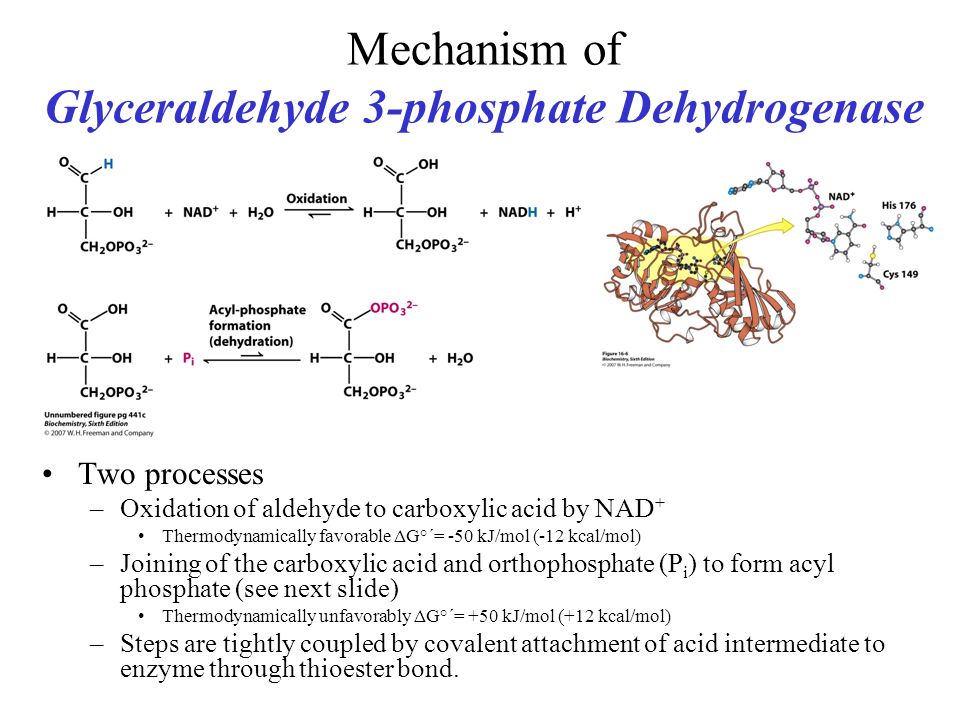
An imbalance in the content of glucose and insulin in the blood plasma leads to a radical metabolic disorder, stimulates hypertension and the development of vascular atherosclerosis, and therefore increases the risk of heart attack or stroke. Many diabetics die of heart attacks before they develop vision, leg, or kidney problems.
Symptoms of high sugar
– sharp fluctuations in weight
– dry mouth
– constant thirst and hunger
– frequent urination
– chronic fatigue syndrome
– constant sleepiness with sufficient sleep time
– slow healing wounds and abrasions
– the smell of acetone in the exhaled air
– arrhythmia
– vision problems
– thinning and hair loss
We ourselves often push the body to an excessive increase in glucose levels.Not only the calorie content of foods is important, but also the diet. For example, having a full breakfast all day will help stabilize your metabolism. Those who ignore breakfast have higher levels of insulin and sugar in the afternoon these days, compared to the days marked with the morning meal. Coffee and sweeteners also negatively affect glucose content. It is noteworthy that no drugs can fully compensate for the harm of such a diet.
Those who ignore breakfast have higher levels of insulin and sugar in the afternoon these days, compared to the days marked with the morning meal. Coffee and sweeteners also negatively affect glucose content. It is noteworthy that no drugs can fully compensate for the harm of such a diet.
How to reduce?
You can also control this parameter at home using a glucometer.If in the morning on an empty stomach the device shows more than 6 mmol / l or 2 hours after eating more than 8 mmol / l, this is a reason to urgently visit an endocrinologist. If at any time the indicator exceeds 11 mmol / l, this is a sign of diabetes mellitus. For children, these numbers should be slightly less, and for pregnant women, the test is generally not suitable. They need to take a two-hour glucose tolerance test and already in the 1st trimester. High sugar levels in early pregnancy greatly increase the risk of developing congenital heart defects in a baby.At the same time, no diabetes pills should be taken during pregnancy.
Some people have high sugar in the morning, others after eating, and still others in the evening. Depending on this, a different diet is prescribed, a schedule for taking medications and insulin injections. Hyperglycemia can also be associated with sudden, significant weight loss. In this case, severe type 1 diabetes is almost certainly present. These patients need regular insulin injections. If the situation is not so serious, treatment usually consists of a low-carbohydrate diet, increased physical activity and the use of metformin (drugs “Glucophage” or “Siofor”) in case you are overweight.Certain types of type 2 diabetes medications (Diabeton, Amaryl, Maninil, and others) can also quickly lower blood sugar. This is where the Zdravsiti drug search service comes in handy. But remember: Getting back to a healthy metabolism requires daily effort without breaks over the holidays and weekends!
Why high blood sugar in the morning
Many people with diagnosed diabetes wonder why sugar is higher in the morning than in the evening and what to do if there is high sugar in the morning on an empty stomach. The intensity and nature of metabolic processes in the body directly depends not only on the general state of health, but also on the time of day. In endocrinology, there are concepts such as the Somoji effect and the morning dawn effect. Both terms are familiar firsthand to people with diagnosed diabetes mellitus. Along with the listed effects, there is an additional list of causes that can cause a sharp increase in blood glucose levels in the morning.
The intensity and nature of metabolic processes in the body directly depends not only on the general state of health, but also on the time of day. In endocrinology, there are concepts such as the Somoji effect and the morning dawn effect. Both terms are familiar firsthand to people with diagnosed diabetes mellitus. Along with the listed effects, there is an additional list of causes that can cause a sharp increase in blood glucose levels in the morning.
A slightly elevated blood sugar level can be detected in the so-called state of prediabetes, when the diagnosis of glucose metabolism has not yet been established.You should pay attention to such facts and consult a doctor to agree on the necessary changes in lifestyle and diet.
What is the morning dawn effect
In the time interval from 12 to 3 am the pancreas does not produce the hormone insulin, since there is no need for this biologically active compound. That is why, in the time interval from 3 to 8 in the morning, there is a sharp jump in blood glucose levels. The effect of morning dawn occurs in any person, regardless of the presence of problems with the production of the hormone insulin by the tissue of the pancreas.
The effect of morning dawn occurs in any person, regardless of the presence of problems with the production of the hormone insulin by the tissue of the pancreas.
If a person does not suffer from diabetes, then this phenomenon does not affect the general condition. Upon awakening, the body produces the amount of hormone that is necessary to normalize metabolic processes. Patients with diabetes mellitus are more difficult to tolerate the phenomenon of dawn, since their pancreas is not able to produce a physiological norm of insulin. That is why such people have an increase in the amount of sugar in their blood in the morning.
And the subsequent decrease in blood sugar levels, after, for example, morning physical exercises, looks quite logical.
What is the Somoji effect
An alternative name for this condition is chronic insulin overdose syndrome. Compared to the previous state, the Somoji effect is less common. This condition develops with the introduction of large dosages of the hormone insulin or in violation of the drug use regimen. The Somoji effect is based on the so-called rebound reaction, characterized by an increase in blood glucose levels in response to hypoglycemia with an overdose of insulin.The following clinical manifestations are characteristic of the Somoji effect:
The Somoji effect is based on the so-called rebound reaction, characterized by an increase in blood glucose levels in response to hypoglycemia with an overdose of insulin.The following clinical manifestations are characteristic of the Somoji effect:
- Daytime sleepiness.
- Dizziness.
- General weakness.
- Excessive sweating.
- Increased appetite.
This condition can develop not only with incorrect insulin treatment. When sugar is high in the morning and normal in the afternoon, the reasons may be as follows:
- Wrong food. With a deficiency of carbohydrates in the daily diet, a sharp drop in blood glucose levels is observed, followed by an increase.
- Drinking alcohol. Ethanol contained in alcoholic beverages has a hypoglycemic effect by inhibiting the process of gluconeogenesis in the liver.
- Physical overload. Excessive physical activity on the eve of insulin administration or immediately thereafter leads to a sharp decrease in blood sugar levels, followed by an increase in glucose concentration.

If this condition is left without proper attention, then a person is faced with a deterioration in the dynamics of the disease and the development of severe complications associated with hyperglycemia.
How to avoid the effects of diabetes in diabetes
In order to avoid the appearance of the Somoji effect in diabetes mellitus, it is necessary to adhere to these simple rules:
- Regularly monitor your blood glucose levels with a portable blood glucose meter.
- Follow the dietary advice given for patients with a similar diagnosis.
- Completely stop drinking alcohol.
- Avoid physical overload.
To avoid a sharp jump in blood glucose values during the phenomenon of morning dawn, the following recommendations will help:
- Dinner should be no later than 19:00.
- In the evening, you should limit the consumption of foods rich in plant fiber.
- The daily dosage of the hormone insulin should be distributed so that the prolonged-release drug is administered between 1:00 and 3:00 am.

- For non-insulin dependent diabetes, the drug should be taken in the evening before bedtime and immediately after waking up in the morning and measuring blood sugar with a glucometer.
If these tips are ineffective, the only way to avoid spikes in blood sugar is to install a 24-hour insulin pump. If one of the effects develops in women during the period of bearing a child with gestational diabetes, then she should use all of the above recommendations.
With timely diagnosis and correction, both conditions do not pose a threat to the health and life of a diabetic. Correct treatment neutralizes metabolic disorders, and the disease itself passes into the stage of stable compensation.The prevention of morning hyperglycemia is based on the correct use of antihyperglycemic drugs and insulin, as well as the absence of errors in nutrition and the level of physical activity. If a diabetic has a high blood sugar level in the morning, the endocrinologist attending the doctor will tell you what to do.
90,000 Early signs of high blood sugar and foods that lower it
Are you constantly hungry? Are you gaining weight even though you have reduced your calorie intake? Feeling persistent stomach problems? If the answer is yes, then you probably suffer from high blood sugar.This does not always indicate the presence of diabetes mellitus. Each of us can have a jump in our blood sugar levels if we consume certain foods, such as sweets, sodas, or baked goods. The real problem starts when sugar levels remain high for an extended period of time, which can indicate serious health problems.
Causes leading to high blood sugar
- Taking certain medications
- Stress
- Lack of physical activity 90 100
- Incorrect power supply 90 100
- Presence of diseases that contribute to the development of diabetes.
Diabetes symptoms
High blood sugar is a major symptom of diabetes, but not always and not the only one. In addition, patients with diabetes mellitus may have other symptoms:
- Dry mouth 90 100
- Thirst
- Frequent urination during the night period 90 100
- Feeling hungry
- Fatigue 90 100
- Dry and itchy skin 90 100
- Weight gain and abdominal fat accumulation 90 100
- Concentration problems 90 100
- Blurred vision 90 100
- Recurrent infections 90 100
- Stomach problems 90 100
- Nervous problems
- Slow healing of wounds and cuts 90 100
- Impotence
Lowering blood glucose levels with low glycemic index foods
The glycemic index (GI) is a numerical index that shows how the blood sugar level changes after eating a particular food. The GI has a scale from 0 to 100: glucose has an index of 100 and is the starting point. Foods with a high glycemic index are quickly absorbed into the blood and quickly digested, causing changes in sugar levels. Low-GI foods increase sugar levels gradually. The higher the GI of the food, the higher the glucose level will be at that particular point in time. The concept of GI is used by diabetologists to prescribe a correct, balanced diet for diabetics. In addition, foods with a low GI index can be useful not only for diabetics, but also for people who monitor their weight, as they reduce hunger and control appetite.
The GI has a scale from 0 to 100: glucose has an index of 100 and is the starting point. Foods with a high glycemic index are quickly absorbed into the blood and quickly digested, causing changes in sugar levels. Low-GI foods increase sugar levels gradually. The higher the GI of the food, the higher the glucose level will be at that particular point in time. The concept of GI is used by diabetologists to prescribe a correct, balanced diet for diabetics. In addition, foods with a low GI index can be useful not only for diabetics, but also for people who monitor their weight, as they reduce hunger and control appetite.
List of foods by their glycemic index:
Knowing the value of the GI of certain foods can help in the preparation of a balanced diet for diabetics, overweight people and those who lead a healthy lifestyle. It is advisable to avoid foods with a high GI – 70+. Foods with a moderate GI index – 55-69 – should be eaten with caution. Ideal for the diet will be foods with a low GI – from 0 to 54.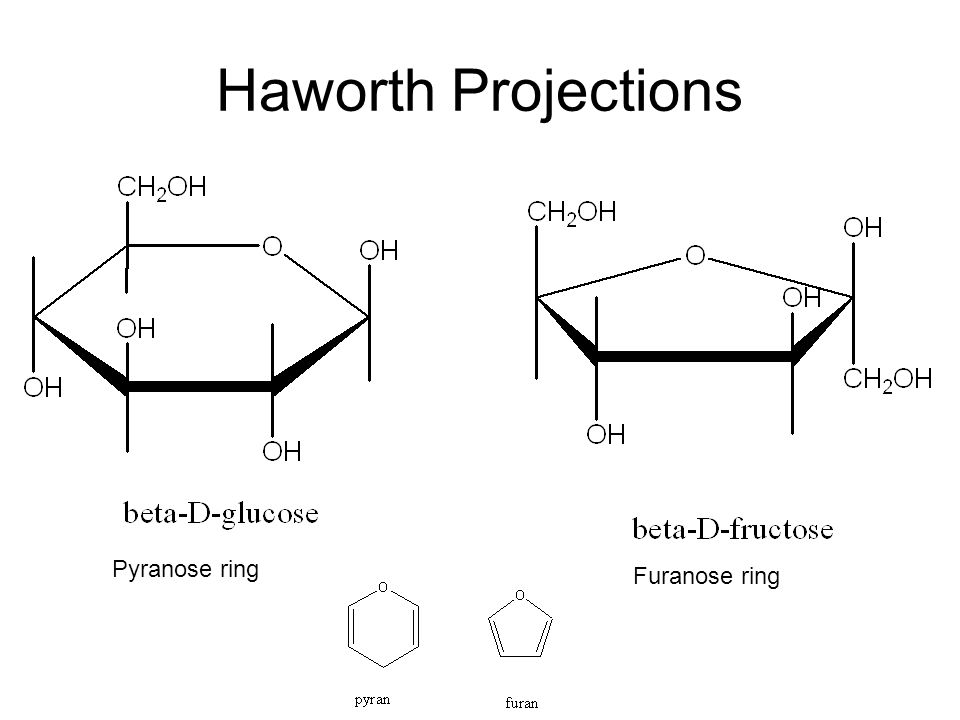
List of some foods:
- Eggs – 0
- Hummus (1 glass) – 6 90 100
- Broccoli – 10 90 100
- Walnuts (glass) – 15 90 100
- Cashew (glass) – 22 90 100
- Cherry (glass) – 22 90 100
- Grapefruit (medium size) – 25 90 100
- Yogurt without sugar – 23 90 100
- Beans (glass) – 34 90 100
- Apple (medium) – 38 90 100
- Tomato juice -38 90 100
- Spaghetti – 46 90 100
- Green Grapes – 46 90 100
- Pineapple juice – 46 90 100
- Carrots (large) – 47 90 100
- Orange (medium) – 48 90 100
- Banana (large) – 52 90 100
- Peas – 54.
Important:
The above products are listed with the average value for the average person. But each body reacts differently to different foods, so people with diabetes should check their blood glucose levels carefully for two hours after each meal.
The methods of treating diabetes mellitus used today by modern medicine allow people with diabetes to live life to the fullest. An important problem remains the possibility of determining the disease at the earliest stages.Knowing the first symptoms can help you quickly identify the disease and initiate timely treatment. An equally important problem is the awareness of the population about the threat of diabetes and its consequences: knowledge of the causes and factors affecting the onset and development of the disease, proper nutrition and a healthy lifestyle can prevent the onset of diabetes. 90,000 High morning blood glucose: causes and solutions
An important problem remains the possibility of determining the disease at the earliest stages.Knowing the first symptoms can help you quickly identify the disease and initiate timely treatment. An equally important problem is the awareness of the population about the threat of diabetes and its consequences: knowledge of the causes and factors affecting the onset and development of the disease, proper nutrition and a healthy lifestyle can prevent the onset of diabetes. 90,000 High morning blood glucose: causes and solutions
Possible causes of high morning glucose:
- Insufficient insulin action late at night due to the phenomenon of “morning dawn” or too low dose of insulin before bedtime?
- “Recoil Phenomenon” after nocturnal hypoglycemia?
- The evening blood glucose level is too high: ate more than usual or injected little insulin for dinner, or a second dinner; less physical activity in the evening?
- Forgot to mix your insulin thoroughly before bed? (No need to mix Lantus / Levemir) Forgot to enter this insulin?
Analyzing the above reasons, it is easy to conclude that the sugar level that you had at night makes a huge contribution to the morning blood glucose level. The selection of the correct dose of insulin (especially long-acting insulin) contributes to the fact that 1/3 of the day, i.e. night, you will be in the near-normal range of blood glucose levels. This fact significantly affects the level of blood glucose during the next day, as well as the level of glycated hemoglobin (HbA1c). Let’s take a closer look at each of these reasons.
The selection of the correct dose of insulin (especially long-acting insulin) contributes to the fact that 1/3 of the day, i.e. night, you will be in the near-normal range of blood glucose levels. This fact significantly affects the level of blood glucose during the next day, as well as the level of glycated hemoglobin (HbA1c). Let’s take a closer look at each of these reasons.
Phenomenon of the morning dawn
Blood glucose will rise in the early morning if you have the so-called “morning dawn phenomenon”, which is reported to affect 80-100% of adults with type 1 diabetes.The development of this effect is associated with increased secretion and action of growth hormone and cortisol late at night and in the early morning. These hormones have the opposite effect of insulin on blood glucose levels. The phenomenon of morning dawn increases morning blood glucose by approximately 1.5-2 mmol / L compared to the level of glucose in the middle of the night with adequate insulin intake throughout the night.
Possible solutions to this problem:
- If you are using a multi-injection regimen and you have the morning dawn phenomenon, you need to give a small amount of bolus insulin in the early morning hours to correct high glucose levels.
- If you use insulin pump therapy, it will be much easier to cope with this phenomenon: you do not need to wake up and inject insulin early in the morning, it is enough to select an adequate rate of basal insulin infusion (in pump settings) for timely correction of hyperglycemia.
Basal insulin dose too low at bedtime
Possible solution to the problem:
- If for several days in a row you notice a high glucose level in the morning, having previously excluded other possible causes, try increasing the dose of night basal insulin by 1-2 U, be sure to control the glucose level at 03-04 in the morning (prevention of night hypoglycemia against the background of changing the insulin).
 Do not draw conclusions based on the results of one day, be sure to evaluate within 2-3 days!
Do not draw conclusions based on the results of one day, be sure to evaluate within 2-3 days!
“Recoil phenomenon” after nocturnal hypoglycemia
“Recoil Phenomenon,” or post-hypoglycemic hyperglycemia, is the body’s defense response to low glucose levels (hypoglycemia), which sometimes results in very high blood glucose levels after hypoglycemia. This is due to the action of counterinsular hormones (adrenaline, glucagon, cortisol, growth hormone), which promote the release of glucose from the liver into the bloodstream, thereby increasing its level in the blood.The “rebound phenomenon” develops only at low blood insulin levels in the hours following the episode of hypoglycemia. The duration of this phenomenon in adults can be up to 12 hours or more, while in children, high glucose levels last only a few hours.
If an additional injection of insulin is given when the blood glucose is high due to the “rebound phenomenon,” the glucose level can drop rapidly, leading to new hypoglycemia. The more sensitive your body is to insulin, the more likely this is to happen.Therefore, you need to be careful with the introduction of additional insulin after the “recoil phenomenon”.
The more sensitive your body is to insulin, the more likely this is to happen.Therefore, you need to be careful with the introduction of additional insulin after the “recoil phenomenon”.
There are significant individual differences in the tendencies of the development of the “phenomenon of recoil”.
Possible solution to the problem:
- To avoid the “recoil phenomenon” of the field of nocturnal hypoglycemia and its consequence – high glucose levels in the morning, it is necessary to take measures to prevent the development of hypoglycemia in general and late evening / night – in particular.If, nevertheless, there was an episode of hypoglycemia at night – try to analyze the situation and the factors contributing to this, and eliminate them. Remember, after recent hypoglycemia, liver glucose stores are depleted, so there may not be enough of them to stop a subsequent episode of low blood glucose levels, which can lead to severe hypoglycemia.

- When correcting high glucose levels after hypoglycemia, try starting with bolus insulin at a dose of that is 2 times lower than than if you were administering insulin to correct hyperglycemia for another reason.
Blood glucose too high in the evening: ate more than usual, or not enough insulin for dinner or a second dinner, less normal physical activity in the evening
Sometimes incorrect / inaccurate calculation of the bolus dose of insulin before evening meals leads to high glucose levels later in the evening and before bedtime. And if the dose of prolonged-release insulin is not excessive, then a pronounced decrease in blood glucose may not occur.As a result, you can spend the whole night with high sugar.
Possible solution to the problem:
- One should strive to start the night with a good glucose level, controlling it immediately before dinner and thoughtfully calculating the dose of bolus insulin (short insulin or ultrashort analogue) depending on the result (glucose) and the amount of XE per meal.
 It will be especially important to check blood glucose 1.5-2 hours after dinner and immediately before bedtime, in order, firstly, to know with what blood glucose level you go to bed, and, secondly, to take the necessary measures to correct hyper / hypoglycemia, if necessary.
It will be especially important to check blood glucose 1.5-2 hours after dinner and immediately before bedtime, in order, firstly, to know with what blood glucose level you go to bed, and, secondly, to take the necessary measures to correct hyper / hypoglycemia, if necessary.
Remember: Giving an extra dose of (ultra) short-acting insulin along with nighttime insulin increases the risk of early nighttime hypoglycemia. You can try to increase the dose of night (basal) insulin by 1-2 units, instead of giving a bolus, and check your sugar at 03-04 in the morning.
Forgot to mix your insulin thoroughly before bed?
If you use medium-acting insulins as long / prolonged / basal insulin (these drugs are usually administered 2 times a day), then before using such insulin (Protafan, Humulin N, Insuman Basal), the contents of the vial or cartridge must be gently mixed.The fact is that to prolong the action of insulin, various impurities are used that make it cloudy.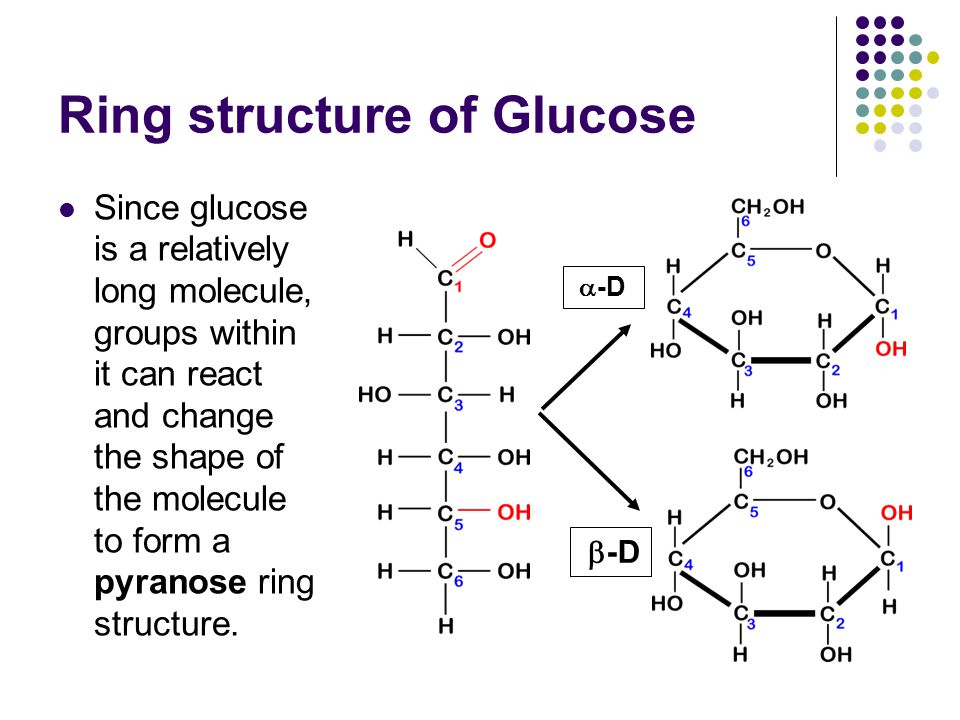 The cloudy part of the contents collects as a sediment at the bottom of the bottle or cartridge.
The cloudy part of the contents collects as a sediment at the bottom of the bottle or cartridge.
Possible solution to the problem:
- Before use, this sediment must be evenly mixed with the rest of the contents by turning the cartridge up and down or rolling in the palms of your hands 90 100
- Modern drugs – analogs of long-acting insulin (Lantus, Levemir).- transparent because both are solutions, not suspensions. Therefore, they do not need to be mixed before use.
Forgot to administer insulin before bed?
Possible solution to the problem:
- If you wake up before 2.00 am, you can still enter your basal insulin, but the dose should be reduced by 25-30% or 1-2 U for every hour that has passed since the usual injection time.
- If you have less than 5 hours before your normal wake-up time, you can give your blood glucose an injection of short or ultra short insulin.

- If you wake up with high blood sugar, nausea, and elevated levels of ketones in your blood or urine (there are special ketone meters), then you have symptoms of insulin deficiency. Inject 0.1 U / kg / bw of short-acting (ultra) insulin and monitor sugar again after 2-3 hours. If blood glucose has not decreased, give another dose of 0.1 U / kg / body weight. If after this nausea persists and / or vomiting occurs, you should immediately go to the hospital!
What should be the “ideal” glucose level before bed?
It is difficult to say what is the ideal blood glucose level before bed.Studies have shown that blood glucose levels of about 7 mmol / L or more before bedtime or at midnight reduce the risk of nocturnal hypoglycemia. However, when using insulin of medium duration (Protafan, Humulin N, Insuman Bazal), it is good to start the night before going to bed with a slightly elevated blood glucose level, preferably 8-10 mmol / l.
Plasma glucose
Glucose is a simple sugar, the main hydrocarbon in the blood and the main source of energy for all cells.
Synonyms Russian
Blood sugar analysis, blood glucose, fasting blood glucose analysis.
Synonyms English
Blood sugar, fasting blood sugar, FBS, fasting blood glucose, FBG, fasting plasma glucose, blood glucose, urine glucose.
Research method
Enzymatic UV method (hexokinase).
Units
Mmol / L (millimol per liter), mg / dL (mmol / L x 18.02 = mg / dL).
What biomaterial can be used for research ?
Venous, capillary blood.
How to properly prepare for the study?
- Do not eat for 12 hours before testing.
- Eliminate physical and emotional stress 30 minutes before the study.

- No smoking within 30 minutes prior to examination.
General information about the study
Glucose is a simple sugar that serves as the body’s main source of energy.The carbohydrates consumed by humans are broken down into glucose and other simple sugars, which are absorbed by the small intestine and enter the bloodstream.
Most cells in the body require glucose for energy production. The brain and nerve cells need it not only as a source of energy, but also as a regulator of their activity, since they can function only if the blood glucose reaches a certain level.
The body can use glucose thanks to insulin, a hormone produced by the pancreas.It regulates the movement of glucose from the blood into the cells of the body, forcing them to accumulate excess energy in the form of a short-term reserve – glycogen or in the form of triglycerides, which are deposited in fat cells. A person cannot live without glucose and insulin, the content of which in the blood must be balanced.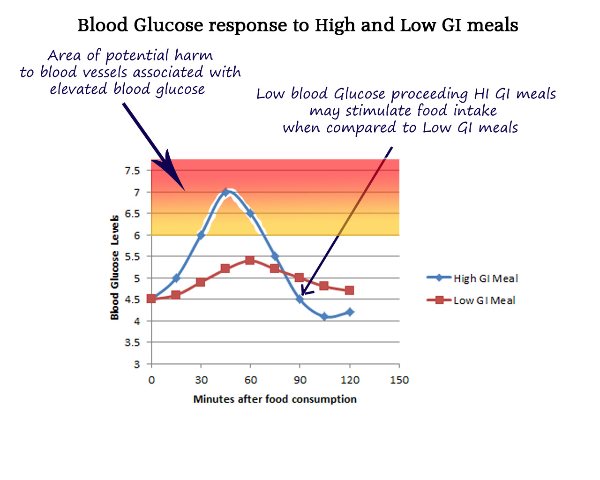
Normally, the level of glucose in the blood plasma increases slightly after a meal, while the secreted insulin lowers its concentration. Insulin levels depend on the volume and composition of the food you eat.If the concentration of glucose in the blood drops too low, which can happen after several hours of fasting or after intense physical work, then glucagon (another hormone of the pancreas) is released, which causes liver cells to convert glycogen back into glucose, thereby increasing its content in the blood. …
Maintaining blood glucose levels is essential. When the glucose-insulin feedback mechanism is working properly, blood glucose remains fairly stable.If this balance is disturbed and the blood sugar level rises, then the body seeks to restore it, firstly, by producing more insulin, and secondly, by excreting glucose in the urine.
Extreme forms of hyper- and hypoglycemia (excess and lack of glucose) can threaten the patient’s life, causing organ dysfunction, brain damage and coma. Chronically high blood glucose can damage the kidneys, eyes, heart, blood vessels, and nervous system.Chronic hypoglycemia is dangerous for the brain and nervous system.
Chronically high blood glucose can damage the kidneys, eyes, heart, blood vessels, and nervous system.Chronic hypoglycemia is dangerous for the brain and nervous system.
Hyperglycemia (gestational diabetes) sometimes occurs during pregnancy in women. If left untreated, it can lead to the mother having a large baby with low blood glucose levels. Interestingly, a woman suffering from hyperglycemia during pregnancy does not necessarily have diabetes after pregnancy.
What is the research used for?
The glucose level is important in the diagnosis of hyper- and hypoglycemia and, accordingly, in the diagnosis of diabetes mellitus, as well as for its subsequent monitoring.The sugar test can be done on an empty stomach (after 8-10 hours of fasting), spontaneously (at any time), after a meal, and can also be part of an oral glucose tolerance test (GTT).
If diabetes is detected, it is recommended to perform a fasting blood glucose test or glucose tolerance test. Moreover, for the final confirmation of the diagnosis, analyzes should be carried out twice at different times.
Moreover, for the final confirmation of the diagnosis, analyzes should be carried out twice at different times.
Most pregnant women are tested for gestational diabetes (a temporary type of hyperglycemia) between the 24th and 28th weeks of pregnancy.
Diabetics should closely monitor their blood glucose levels to adjust pill intake and insulin injections. Usually it is required to determine several times a day how much the glucose concentration deviates from the norm.
Measurement of glucose levels at home, as a rule, is carried out using a special device – a glucometer, in which a test strip is placed with a pre-applied drop of blood from the patient’s finger.
When is this test scheduled?
- For prophylactic examination of patients without suspected diabetes, since diabetes is a disease that begins with minor symptoms. It is especially important to monitor blood glucose levels for patients with a genetic predisposition to diabetes, overweight, and those over 45 years of age.

- For the diagnosis of diabetes in patients with symptoms of hyper- or hypoglycemia. Symptoms of hyperglycemia or high blood sugar: increased thirst, increased urination, fatigue, blurred vision, increased susceptibility to infections.Symptoms of hypoglycemia or low blood sugar: sweating, increased appetite, anxiety, blurred consciousness, blurred vision.
- In case of loss of consciousness or severe weakness, to find out if it is caused by low blood sugar.
- If the patient has a pre-diabetic condition (in which the plasma glucose level is higher than normal, but lower than in diabetic patients), the analysis is performed at regular intervals.
- For people diagnosed with diabetes mellitus, a blood glucose test is prescribed in conjunction with a glycated hemoglobin (A1c) test to track changes in blood glucose over a long period of time.
- In some cases, a plasma glucose test can be done in conjunction with an insulin and C-peptide test to monitor insulin production.

- Pregnant women are usually screened for gestational diabetes at the end of term. If a woman has been diagnosed with gestational diabetes before, then she takes a glucose test during the entire pregnancy, as well as after childbirth.
What do the results mean?
Reference values (Norm of blood glucose)
Age | Reference values |
less than 14 years | 3.3 – 5.6 mmol / l |
children over 14 years old, men, non-pregnant women | 4.1 – 6.1 mmol / l |
pregnant women | 4.1 – 5.1 mmol / l |
Other causes of high glucose:
- acromegaly,
- severe stress (reaction to trauma, heart attack, stroke),
- chronic renal failure,
- hypercortisolism syndrome (Itsenko – Cushinga),
- taking drugs such as corticosteroids, tricyclic antidepressants, diuretics, epinephrines, estrogens, lithium, diphenin (dilantin), salicylates,
- excess intake of high-carbohydrate food,
- hyperthyroidism,
- pancreatic cancer,
- pancreatitis.
Causes of low blood glucose:
- adrenal insufficiency,
- alcohol abuse,
- taking drugs such as acetaminophen and anabolic steroids,
- liver disease,
- hypopituitarism,
- hypothyroidism,
- insulin overdose,
- insulinomas,
- starvation.
Download an example of the result
Important notes
- Hypoglycemia is characterized by a drop in blood plasma glucose to a level at which disorders of the nervous system occur (sweating, trembling, hunger, anxiety), then the brain is also affected (blurred consciousness, hallucinations, blurred vision, sometimes coma and even death ).
- Confirmation of the Viple triad is required for a confident diagnosis of hypoglycemia:
- glucose level below the threshold of 40 mg / dL (2.2 mmol / L), 90 100
- symptoms of hypoglycemia,
- disappearance of symptoms when blood glucose returns to normal.
- Primary hypoglycemia is a rare form and is usually diagnosed during childhood.
- Signs of hypoglycemia sometimes appear in patients whose blood sugar is not low.If this is the case, dietary changes, such as eating smaller meals more often throughout the day and choosing complex carbohydrates, may be sufficient to relieve symptoms.
Also recommended
Who orders the study?
Therapist, endocrinologist, pediatrician, general practitioner, gastroenterologist.
Literature
- Federal clinical guidelines (protocols) for the management of children with endocrine diseases.Ministry of Health of the Russian Federation. M., 2014.
- Clinical guidelines “Algorithms of specialized medical care for patients with diabetes mellitus”. Edited by I.I. Dedova, M.V. Shestakova, A. Yu. Mayorova 8th edition, M., 2017.
- Definition and diagnosis of diabetes mellitus and intermediate hyperglycemia. Report of a WHO / IDF ConsultatIon. 2006.
- Advice on diabetes, prediabetes and cardiovascular disease. EASD / ESC, Russian Journal of Cardiology 2014; No. 3 (107): 7-61.
- Gestational diabetes mellitus: diagnosis, treatment, postpartum follow-up. Clinical guidelines (protocol) of the Ministry of Health of the Russian Federation. M., 2014.
Type 2 diabetes mellitus: description of the disease, causes, symptoms, cost of treatment in Moscow
Type 2 diabetes mellitus is a chronic endocrine disease that develops as a result of insulin resistance and dysfunction of the beta cells of the pancreas, characterized by a state of hyperglycemia.
Manifested by profuse urination (polyuria), increased thirst (polydipsia), itching of the skin and mucous membranes, increased appetite, hot flashes, muscle weakness.
The diagnosis is established based on the results of laboratory tests. A blood test is performed for glucose concentration, glycosylated hemoglobin level, glucose tolerance test. The treatment uses hypoglycemic drugs, a low-carbohydrate diet, and increased physical activity.
The word “diabetes” is translated from Greek as “to flow out, to flow out”, in fact, the name of the disease means “outflow of sugar”, “loss of sugar”, which determines the key symptom – increased excretion of glucose in the urine.
Type 2 diabetes mellitus, or non-insulin dependent diabetes mellitus, develops against the background of an increase in tissue resistance to the action of insulin and a subsequent decrease in the functions of cells of the islets of Langerhans. Unlike type 1 diabetes, in which a lack of insulin is primary, in type 2 the hormone deficiency is the result of long-term insulin resistance.
Epidemiological data are very heterogeneous, depending on ethnic characteristics, socio-economic conditions of life. In Russia, the estimated prevalence is 7%, which is 85-90% of all forms of diabetes. The incidence is high among people over 40-45 years old.
Causes of type 2 diabetes mellitus
The development of the disease is triggered by a combination of hereditary predisposition and factors that affect the body throughout life.By adulthood, unfavorable exogenous influences reduce the sensitivity of the body’s cells to insulin, as a result of which they cease to receive a sufficient amount of glucose.
The causes of type II diabetes can be:
Obesity. Adipose tissue reduces the ability of cells to use insulin. Overweight is a key risk factor for the development of the disease, determined in 80-90% of patients.
Physical inactivity.Deficiency of motor activity negatively affects the work of most organs and slows down metabolic processes in cells. A hypodynamic lifestyle is accompanied by a low consumption of glucose by the muscles and its accumulation in the blood.
Improper nutrition. The main cause of obesity in people with diabetes is overeating – an excess of calories in the diet. Another negative factor is the consumption of large amounts of refined sugar, which quickly enters the bloodstream, provoking “surges” in insulin secretion.
Endocrine diseases. The manifestation of diabetes can be triggered by endocrine pathologies. There are cases of morbidity against the background of pancreatitis, pancreatic tumors, pituitary insufficiency, hypo- or hyperfunction of the thyroid gland or adrenal glands.
Infectious diseases. In people with hereditary burden, the primary manifestation of diabetes is recorded as a complication of a viral disease.The most dangerous are influenza, herpes and hepatitis.
Pathogenesis
Type II diabetes mellitus is based on impaired carbohydrate metabolism due to increased cell resistance to insulin (insulin resistance). The ability of tissues to accept and utilize glucose decreases, a state of hyperglycemia develops – an increased level of plasma sugar, alternative ways of obtaining energy from free fatty acids and amino acids are activated.
To compensate for hyperglycemia, the body strenuously removes excess glucose through the kidneys. Its amount in the urine increases, glucosuria develops. A high concentration of sugar in biological fluids causes an increase in osmotic pressure, which provokes polyuria – profuse frequent urination with loss of fluid and salts, leading to dehydration and water-electrolyte imbalance. These mechanisms explain most of the symptoms of diabetes – intense thirst, dry skin, weakness, arrhythmias.
Hyperglycemia alters the processes of peptide and lipid metabolism. The residues of sugars attach to the molecules of proteins and fats, disrupting their functions, hyperproduction of glucagon occurs in the pancreas, the breakdown of fats is activated as an energy source, the reabsorption of glucose by the kidneys is enhanced, the transmitter transmission in the nervous system is disrupted, and intestinal tissues are inflamed.
Thus, the pathogenetic mechanisms of diabetes provoke pathologies of the vessels (angiopathy), the nervous system (neuropathy), the digestive system, and the endocrine glands.A later pathogenetic mechanism is insulin deficiency. It is formed gradually, over several years, due to depletion and natural programmed death of β-cells. Over time, a moderate insulin deficiency is replaced by a pronounced one. Secondary insulin dependence develops, patients are prescribed insulin therapy.
Classification
Depending on the severity of carbohydrate metabolism disorders in diabetes mellitus, a phase of compensation is distinguished (a state of normoglycemia is achieved), a phase of subcompensation (with a periodic increase in blood glucose levels) and a phase of decompensation (hyperglycemia is stable, difficult to correct).Taking into account the severity, three forms of the disease are distinguished:
Lightweight. Compensation is achieved by adjusting nutrition or diet in combination with a minimum dosage of a hypoglycemic drug. The risk of complications is low.
To compensate for metabolic disorders, regular intake of antidiabetic drugs is required. The probability of the initial stages of vascular complications is high.
Heavy.Patients need constant use of tableted hypoglycemic drugs and insulin, sometimes only insulin therapy. Serious diabetic complications are formed – angiopathy of small and large vessels, neuropathy, encephalopathy.
Symptoms of type 2 diabetes mellitus
The disease develops slowly, at the initial stage, the manifestations are barely noticeable, this greatly complicates the diagnosis.
The first symptom is increased thirst.Patients feel dry mouth, drink up to 3-5 liters per day. Accordingly, the amount of urine and the frequency of the urge to empty the bladder increase. Children may develop enuresis, especially at night. Due to frequent urination and a high sugar content in the excreted urine, the skin of the groin area is irritated, itching occurs, and redness appears.
Gradually, itching covers the abdomen, armpits, bends of the elbows and knees. An insufficient supply of glucose to the tissues contributes to an increase in appetite, patients experience hunger already 1-2 hours after eating.Despite the increase in the caloric content of the diet, the weight remains the same or decreases, since glucose is not absorbed, but is lost with the excreted urine.
Additional symptoms are fatigue, constant feeling of fatigue, daytime sleepiness, weakness. The skin becomes dry, thinner, prone to rashes, fungal infections. Bruises easily appear on the body. Wounds and abrasions take a long time to heal and often become infected. Girls and women develop genital candidiasis, boys and men develop urinary tract infections.
Most patients report a tingling sensation in the fingers, numbness in the feet. After eating, you may feel nausea and even vomiting. High blood pressure, frequent headaches and dizziness.
Complications
The decompensated course of type 2 diabetes is accompanied by the development of acute and chronic complications. Acute conditions include conditions that arise quickly, suddenly and are accompanied by a risk of death – hyperglycemic coma, lactic acid coma and hypoglycemic coma.
Chronic complications form gradually, include diabetic micro- and macroangiopathies, manifested by retinopathy, nephropathy, thrombosis, vascular atherosclerosis. Diabetic polyneuropathies are revealed, namely polyneuritis of peripheral nerves, paresis, paralysis, autonomic disorders in the work of internal organs. Diabetic arthropathies are observed – joint pain, limitation of mobility, a decrease in the volume of synovial fluid, as well as diabetic encephalopathy – mental disorders, manifested by depression, emotional instability.
Diagnostics
The difficulty of detecting non-insulin dependent diabetes mellitus is explained by the absence of pronounced symptoms at the initial stages of the disease. In this regard, people at risk and all people over 40 years of age are recommended screening tests for plasma sugar levels. Laboratory diagnostics is the most informative, it allows you to detect not only the early stage of diabetes, but also the state of pre-diabetes – a decrease in glucose tolerance, manifested by prolonged hyperglycemia after carbohydrate load.
In case of signs of diabetes, the examination is carried out by an endocrinologist. Diagnostics begins with clarifying complaints and collecting anamnesis, the specialist clarifies the presence of risk factors (obesity, physical inactivity, hereditary burden), identifies the basic symptoms – polyuria, polydipsia, increased appetite. The diagnosis is confirmed after receiving the results of laboratory diagnostics. Specific tests include:
Fasting glucose. The criterion for the disease is a glucose level above 7 mmol / l (for venous blood).The material is taken after 8-12 hours of hunger.
Glucose tolerance test. To diagnose diabetes at an early stage, the glucose concentration is examined a couple of hours after consuming carbohydrate foods. A value above 11.1 mmol / L reveals diabetes, in the range of 7.8-11.0 mmol / L prediabetes is determined.
Glycated hemoglobin. The analysis allows you to estimate the average value of glucose concentration over the past three months.Diabetes is indicated by a value of 6.5% or more (venous blood). With a result of 6.0-6.4%, prediabetes is diagnosed.
Differential diagnosis includes distinguishing between non-insulin dependent diabetes mellitus and other forms of the disease, in particular, type 1 diabetes mellitus. Clinical differences are a slow onset of symptoms, a later date of onset of the disease (although in recent years the disease has also been diagnosed in young people 20-25 years old). Laboratory differential signs – increased or normal levels of insulin and C-peptide, lack of antibodies to beta cells of the pancreas.
Treatment of type 2 diabetes mellitus
In endocrinology, a systematic approach to therapy is common. In the early stages of the disease, the focus is on lifestyle changes for patients and counseling, in which the specialist talks about diabetes, ways to control sugar. With persistent hyperglycemia, the question of the use of drug correction is being resolved. A full range of therapeutic measures includes:
Diet. The basic principle of nutrition is to reduce the amount of food that is high in fat and carbohydrates.Especially “dangerous” are products with refined sugar – confectionery, sweets, chocolate, sweet carbonated drinks. The patient’s diet consists of vegetables, dairy products, meat, eggs, a moderate amount of cereals. You need a fractional diet, small portions, refusal of alcohol and spices.
Regular physical activity. Patients without severe diabetic complications are shown sports activities that enhance oxidation processes (aerobic exercise).Their frequency, duration and intensity are determined individually. Most patients are allowed to walk, swim and walk. The average time of one lesson is 30-60 minutes, the frequency is 3-6 times a week.
Drug therapy. Medicines of several groups are used. The use of biguanides and thiazolidinediones – drugs that reduce insulin resistance of cells, absorption of glucose in the gastrointestinal tract and its production in the liver – is widespread.With their insufficient effectiveness, drugs are prescribed that increase the activity of insulin: DPP-4 inhibitors, sulfonylurea derivatives, meglitinides.
Forecast and prevention
Timely diagnosis and a responsible attitude of patients to the treatment of diabetes mellitus make it possible to achieve a state of stable compensation, in which normoglycemia persists for a long time, and the quality of life of patients remains high. To prevent the disease, it is necessary to adhere to a balanced diet with a high fiber content, limitation of sweet and fatty foods, and a fractional meal regimen.It is important to avoid physical inactivity, provide the body with physical activity in the form of walking every day, and go in for sports 2-3 times a week. Regular glucose control is necessary for people from risk groups (overweight, mature and old age, cases of diabetes among relatives).
90,000 High blood sugar linked to doubling the risk of death from COVID-19
Chinese doctors have found that high blood sugar doubles the likelihood of death from severe forms of coronavirus infection, even if the patient does not suffer from diabetes or obesity …Their findings were published in the scientific journal Diabetologia.
“Our observations have shown for the first time that elevated blood glucose levels at the time of hospitalization were themselves associated with an increased risk of death or complications associated with COVID-19. We recommend testing blood glucose levels for every patient who is admitted to hospitals. with coronavirus infection, even if they have not previously suffered from diabetes, “the researchers write.
After the outbreak of COVID-19, physicians and biologists found that the causative agent of this disease SARS-CoV-2 is much more likely to affect people who suffer from diabetes, obesity, chronic heart disease, as well as smokers.In particular, scientists found that cardiac problems increased the likelihood of death of patients from coronavirus infection by more than four times, and obesity and diabetes – from three to five times.
In a new work, doctors led by Professor Yang Jin of Huazhong University of Science and Technology (China) found that high blood glucose levels can increase the chances of death from COVID-19. They came to this conclusion after studying the medical records of more than 600 patients who were admitted to hospitals in Wuhan between January 24 and February 10.
Over a hundred of them could not fight the infection, so scientists were able to comprehensively study those factors and features of their body that caused the death of patients. By analyzing their medical history, Jin and his colleagues confirmed the existence of all known risk factors, and also came across another curious pattern.
New risk factors
Scientists found that people who had relatively high blood sugar levels – about 7 millimoles per liter – died from complications from COVID-19 about 2.3 times more often than other patients.
Similarly, people with average blood sugar died 71% more often than other patients. Moreover, this probability was not associated with the development of obesity, diabetes and other metabolic disorders. In addition, elevated blood sugar levels almost quadrupled the likelihood of developing severe COVID-19 and various complications.
“In this case, it is difficult to assume that all of these people suffered from previously undetected diabetes, as the total number of patients with high glucose levels was close to 29%, while only 12% of the Chinese population are diabetics.At the same time, it cannot be ruled out that their insulin resistance arose due to infection with SARS-CoV-2 or other diseases, “the researchers note.
How exactly high blood sugar levels increase the likelihood of death of carriers of COVID-19, scientists do not yet know. But they suggest that excess blood glucose can contribute to the formation of blood clots and inflammation, as well as impair the function of blood vessels.

 3 mmol/L) and you have ketones in your urine
3 mmol/L) and you have ketones in your urine Prompt medical care is essential.
Prompt medical care is essential.

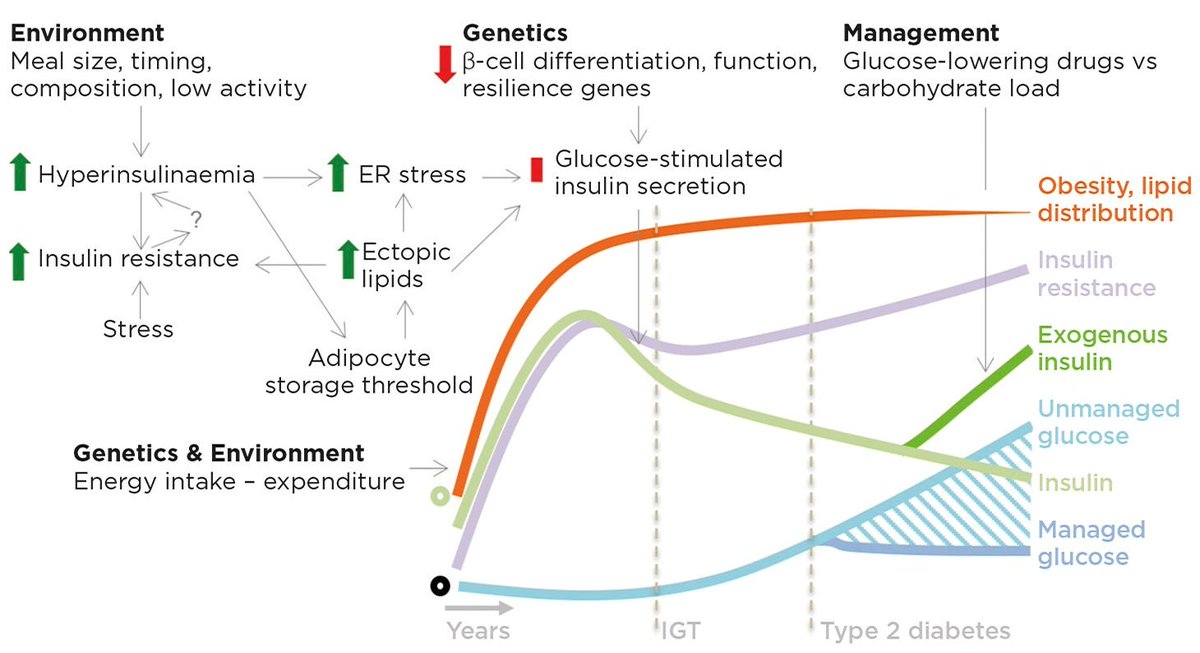 5% on the older measurement scale)
5% on the older measurement scale)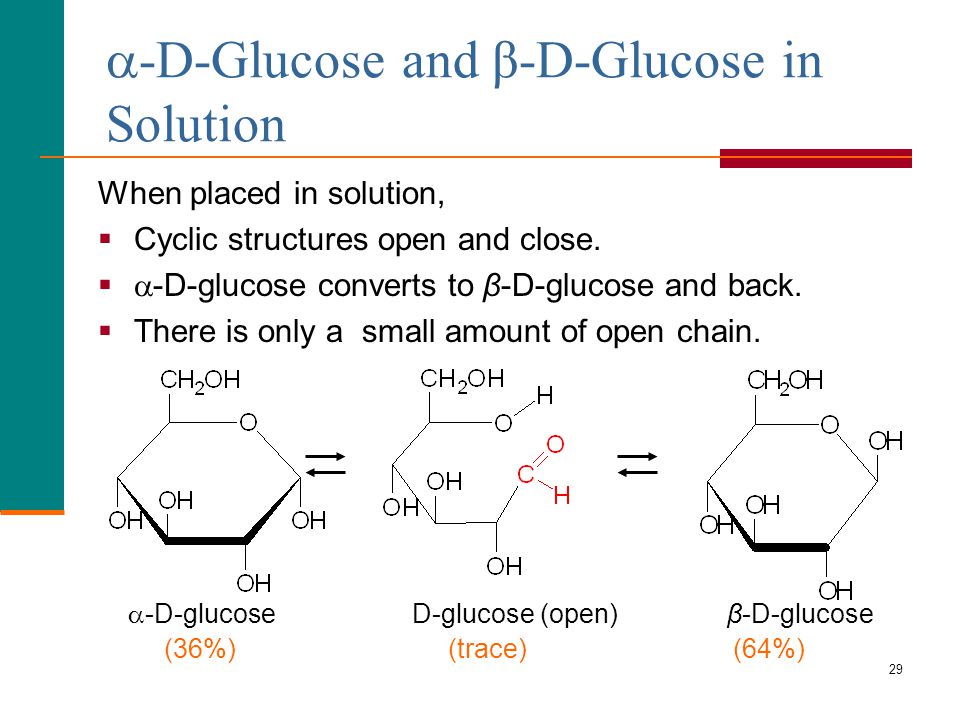
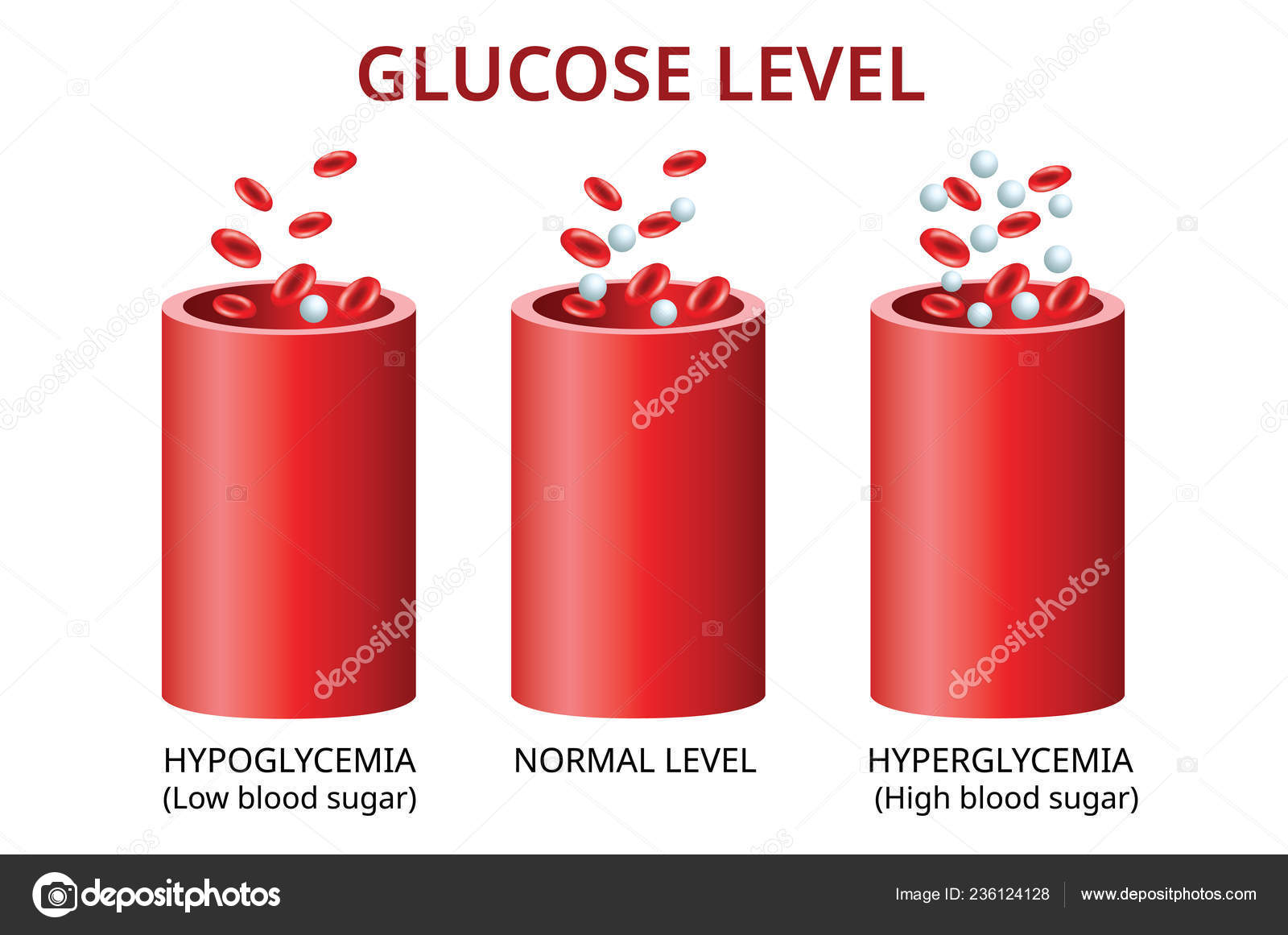 If you have diabetes, you will have problems with
If you have diabetes, you will have problems with
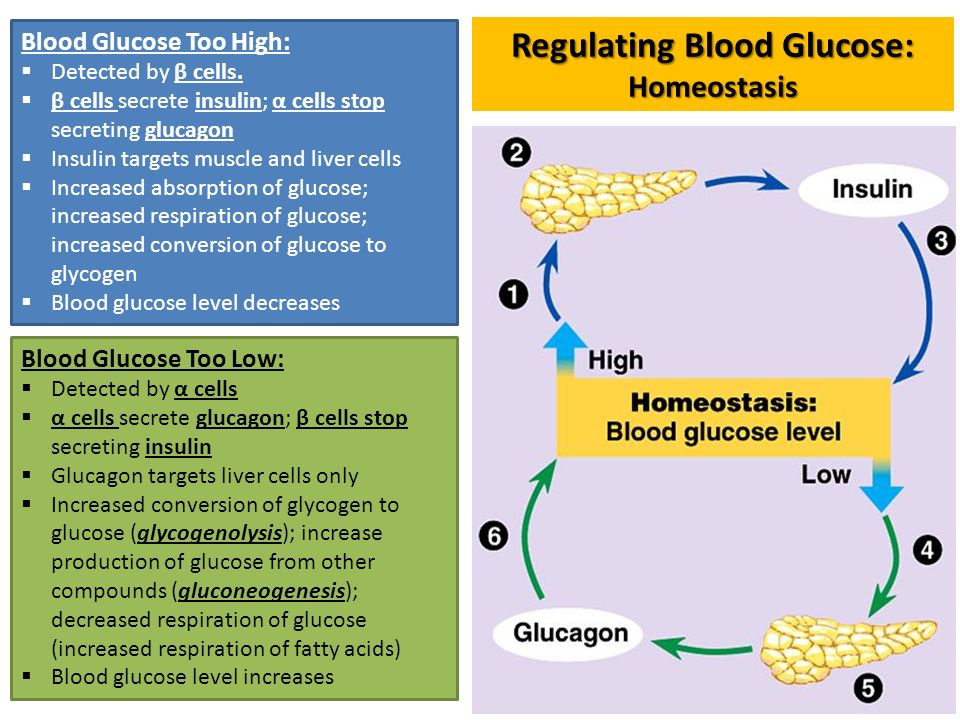

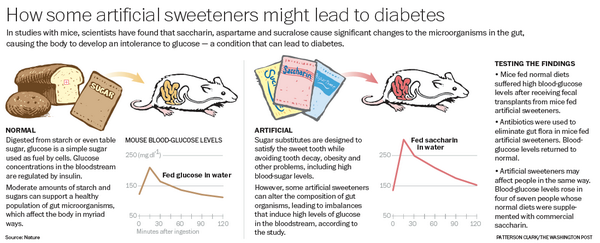
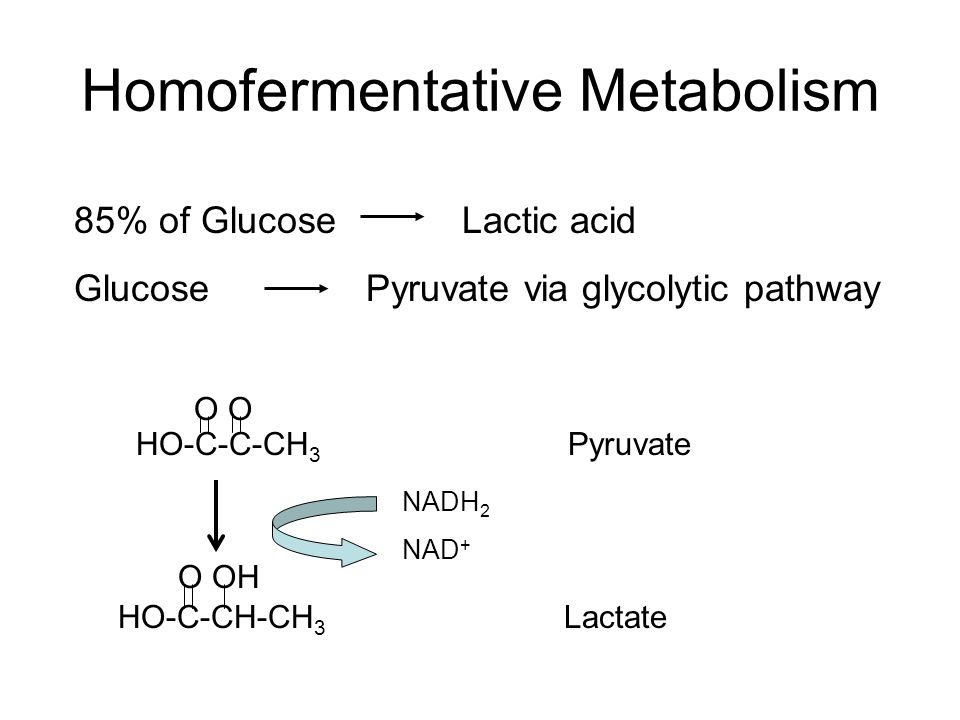 However, you may be treated as if you
However, you may be treated as if you
 You
You
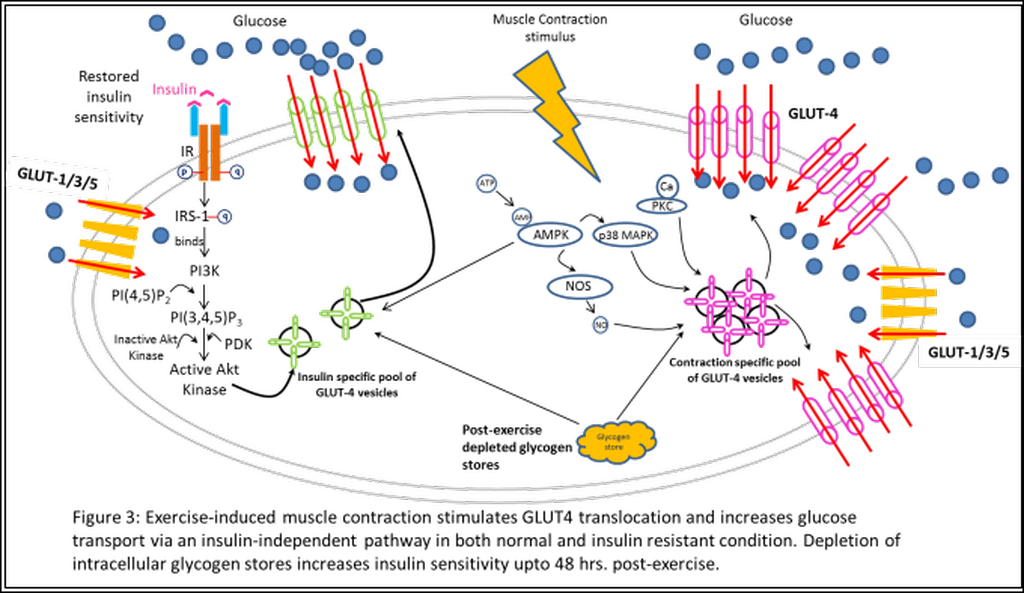


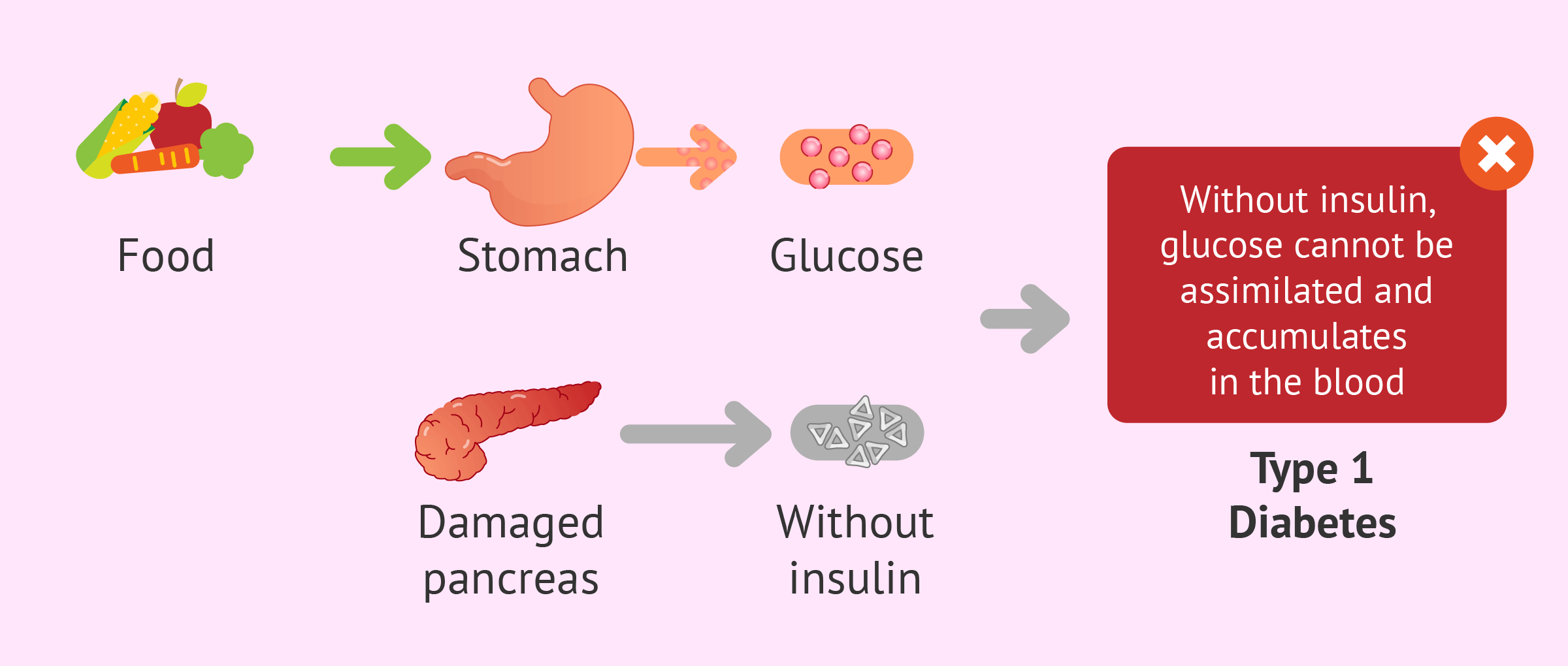 At first, you will be required to check your blood sugar levels
At first, you will be required to check your blood sugar levels

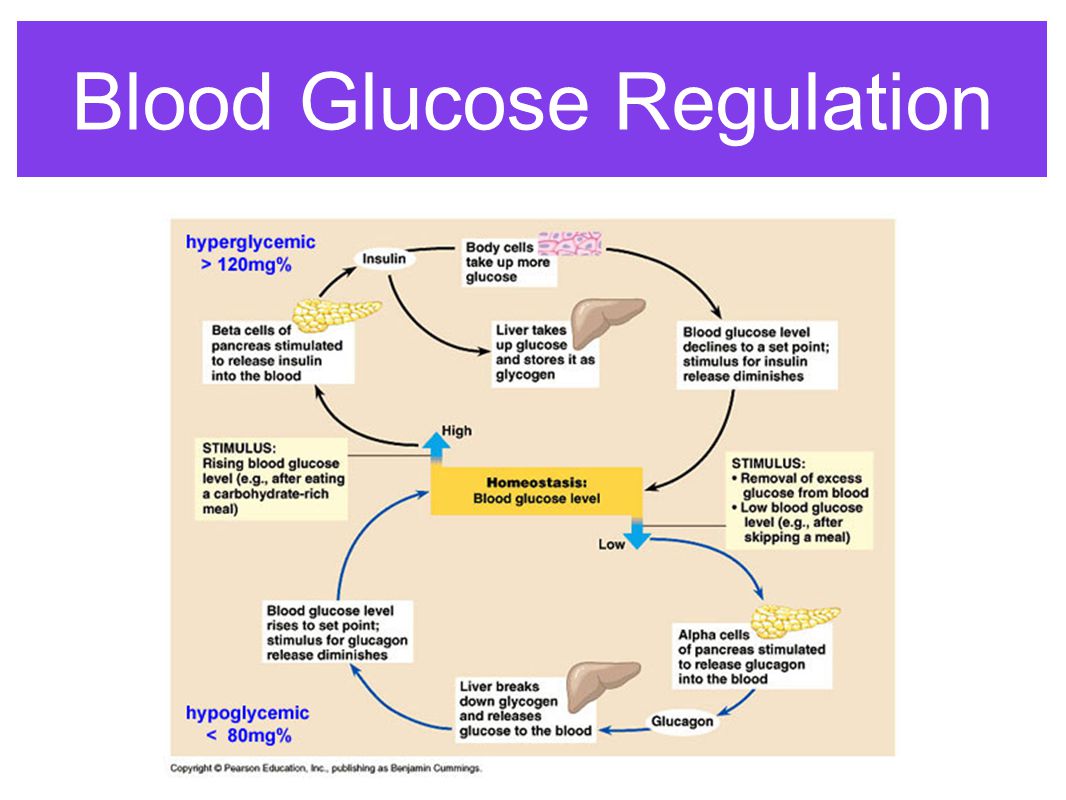
 Any change in vision should be reported as soon as it is noticed
Any change in vision should be reported as soon as it is noticed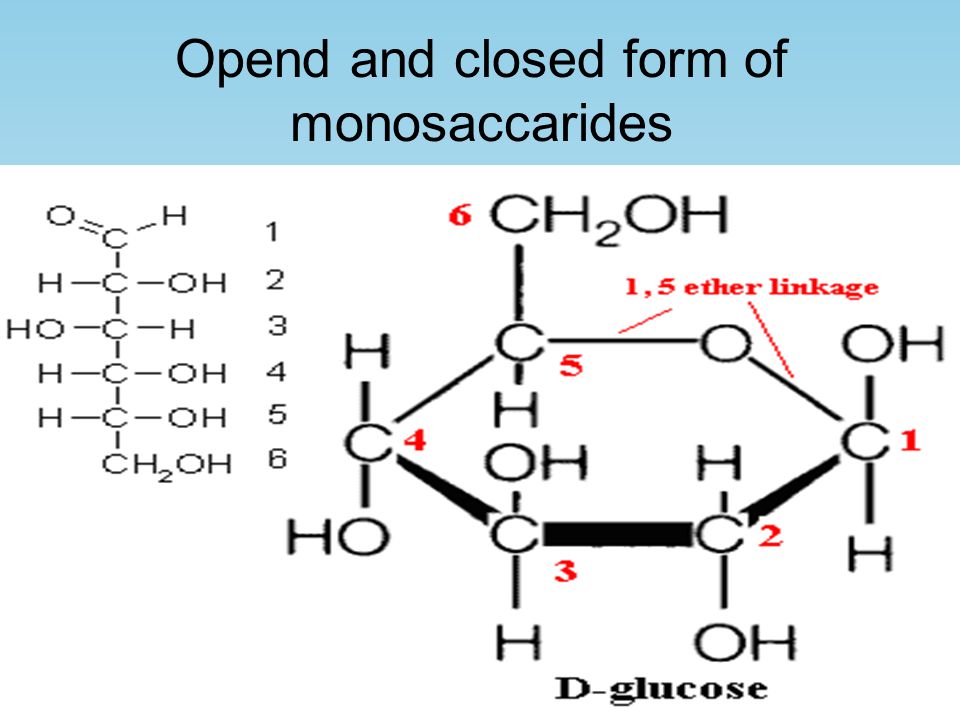 They can prescribe medications and/or offer
They can prescribe medications and/or offer
 Your healthcare provider will determine this.
Your healthcare provider will determine this.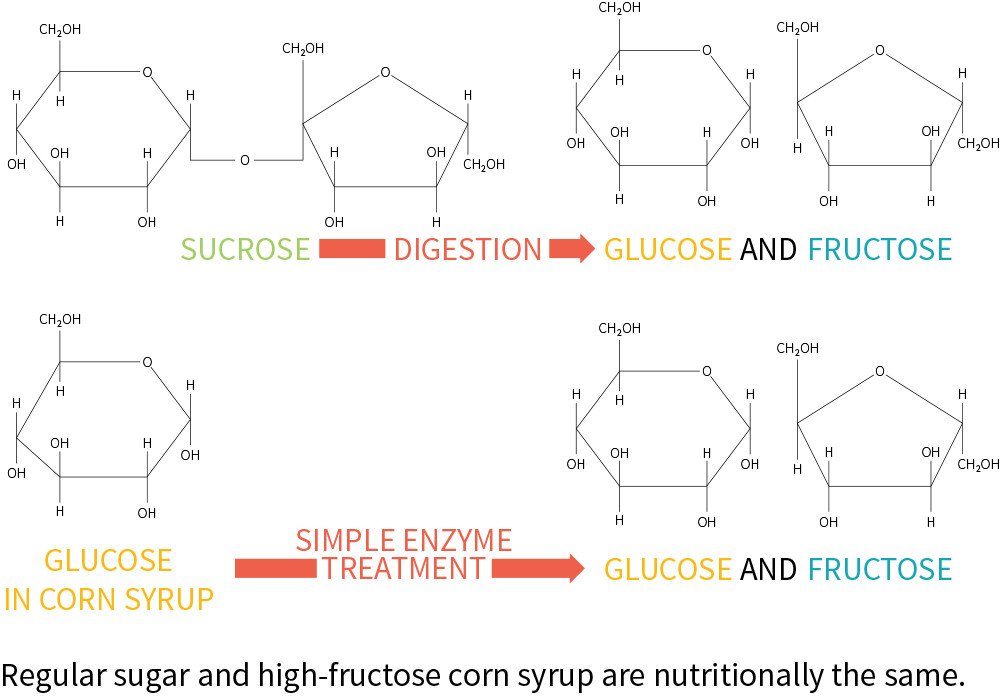


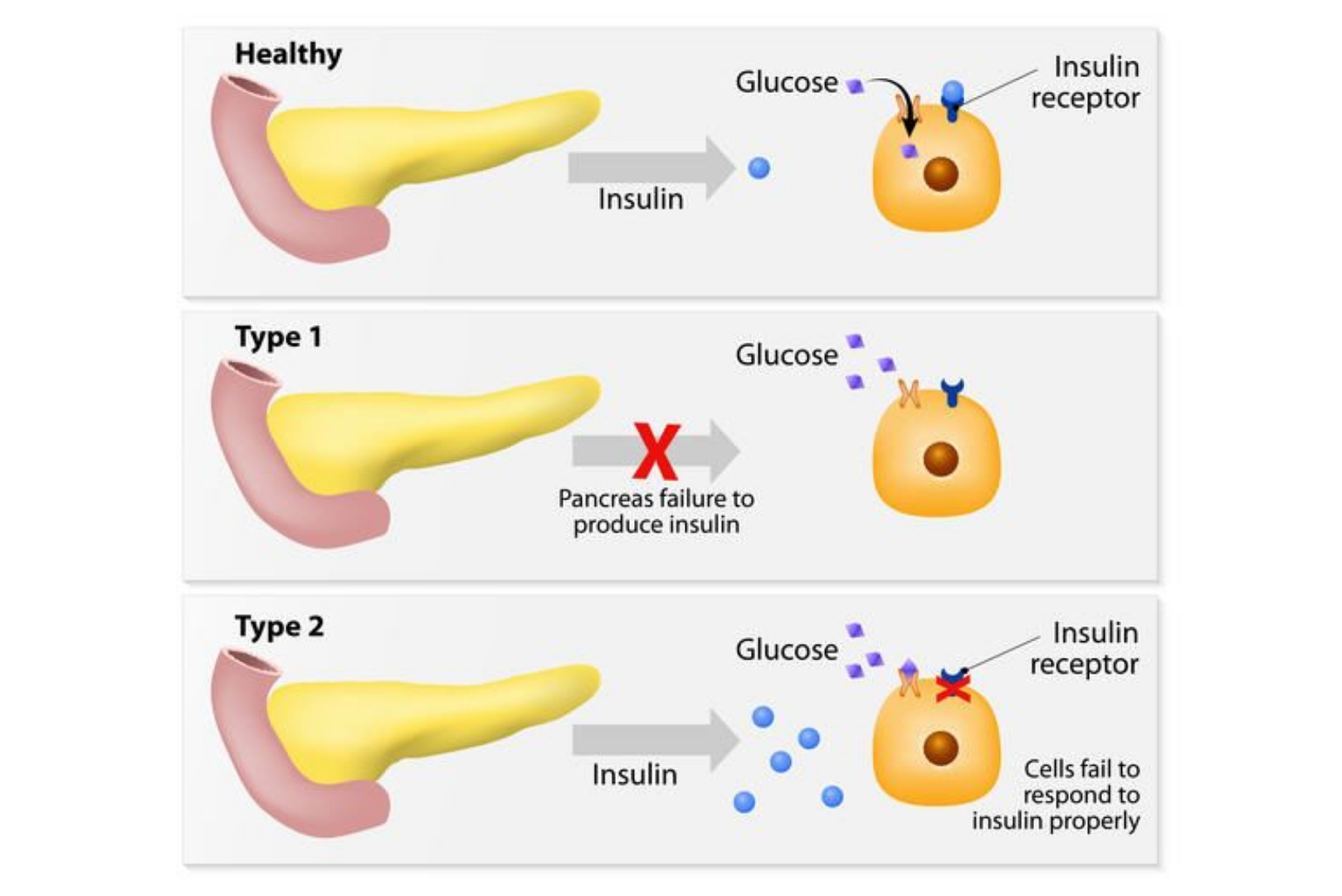 Do not draw conclusions based on the results of one day, be sure to evaluate within 2-3 days!
Do not draw conclusions based on the results of one day, be sure to evaluate within 2-3 days!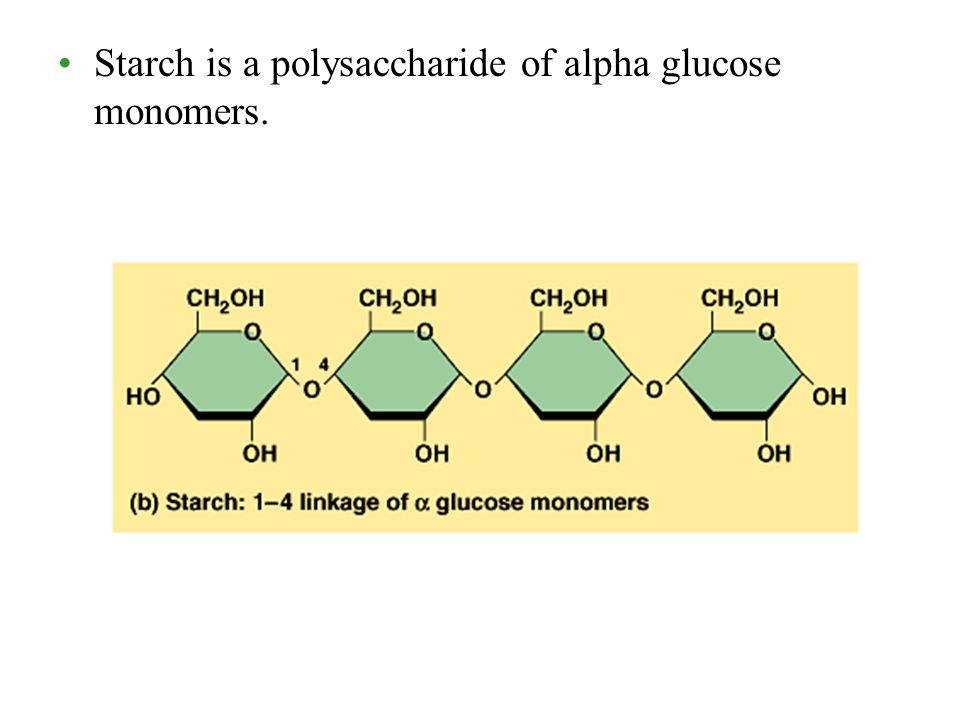
 It will be especially important to check blood glucose 1.5-2 hours after dinner and immediately before bedtime, in order, firstly, to know with what blood glucose level you go to bed, and, secondly, to take the necessary measures to correct hyper / hypoglycemia, if necessary.
It will be especially important to check blood glucose 1.5-2 hours after dinner and immediately before bedtime, in order, firstly, to know with what blood glucose level you go to bed, and, secondly, to take the necessary measures to correct hyper / hypoglycemia, if necessary.